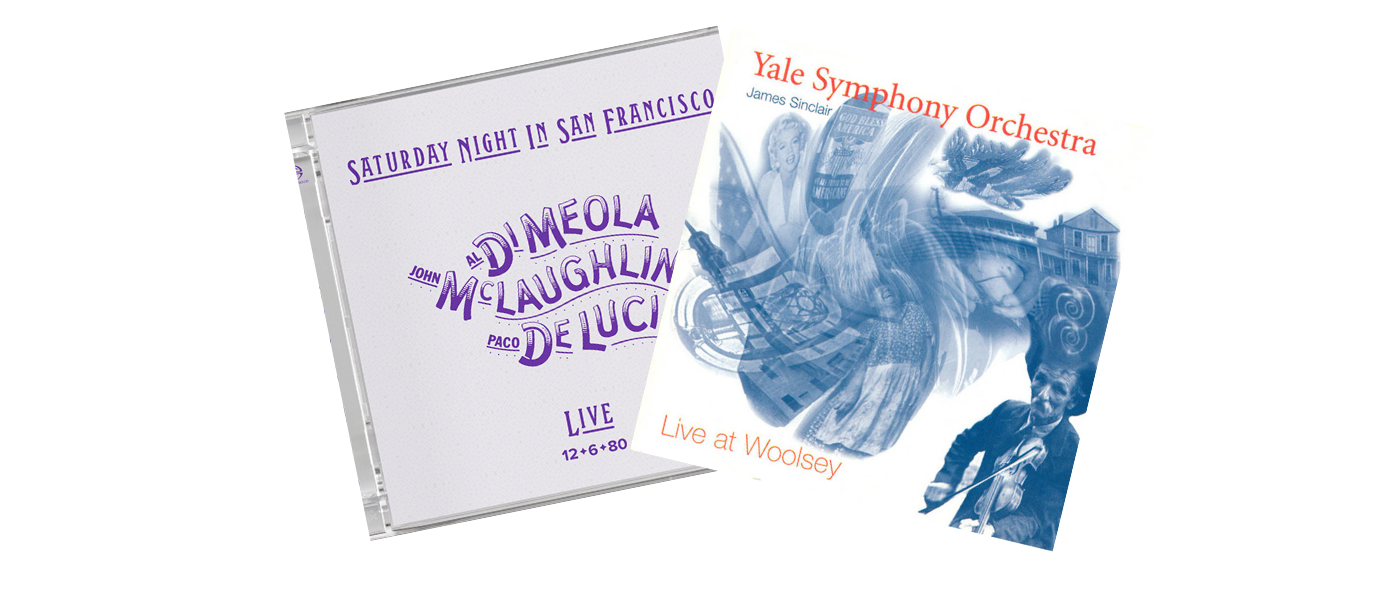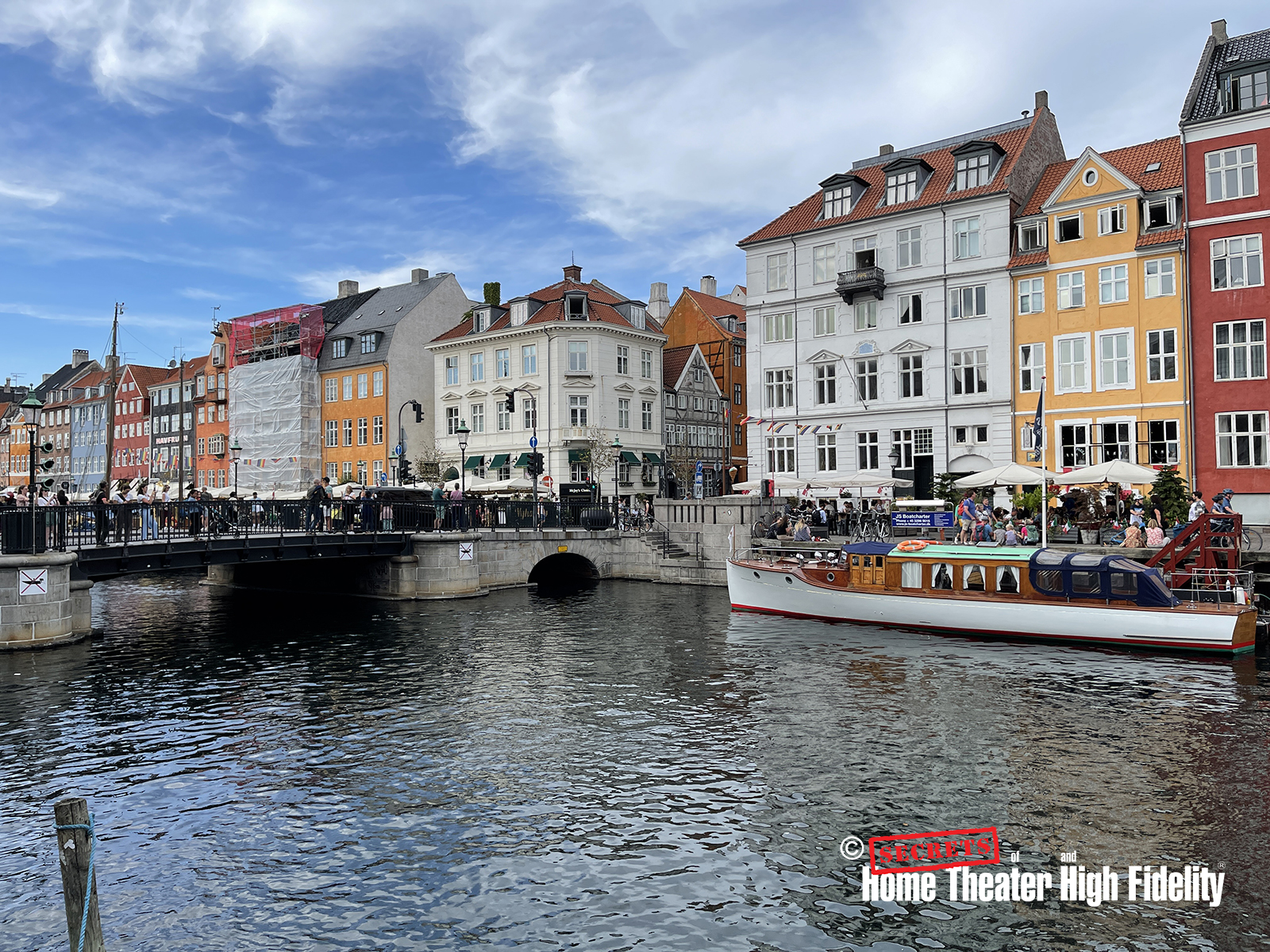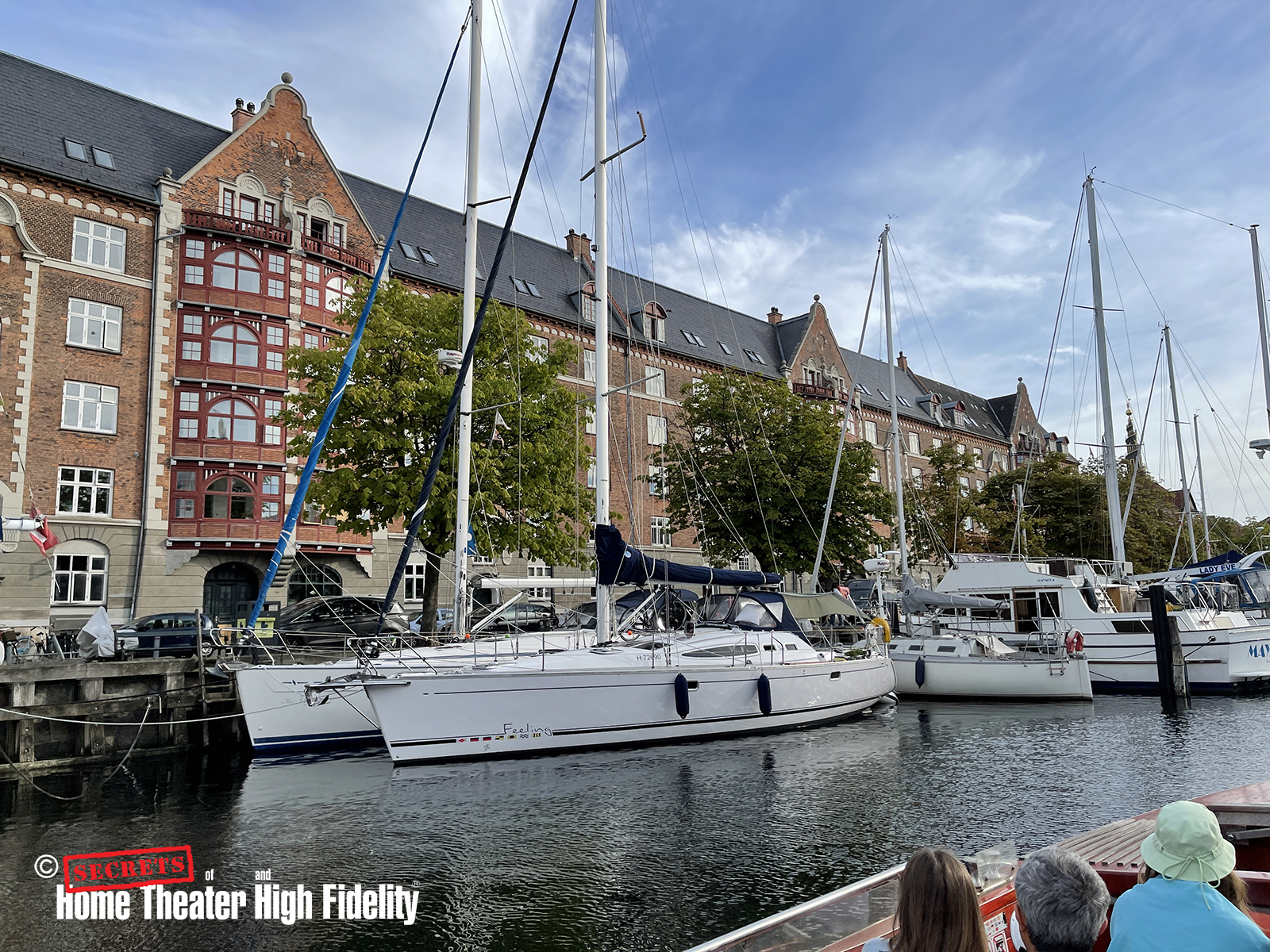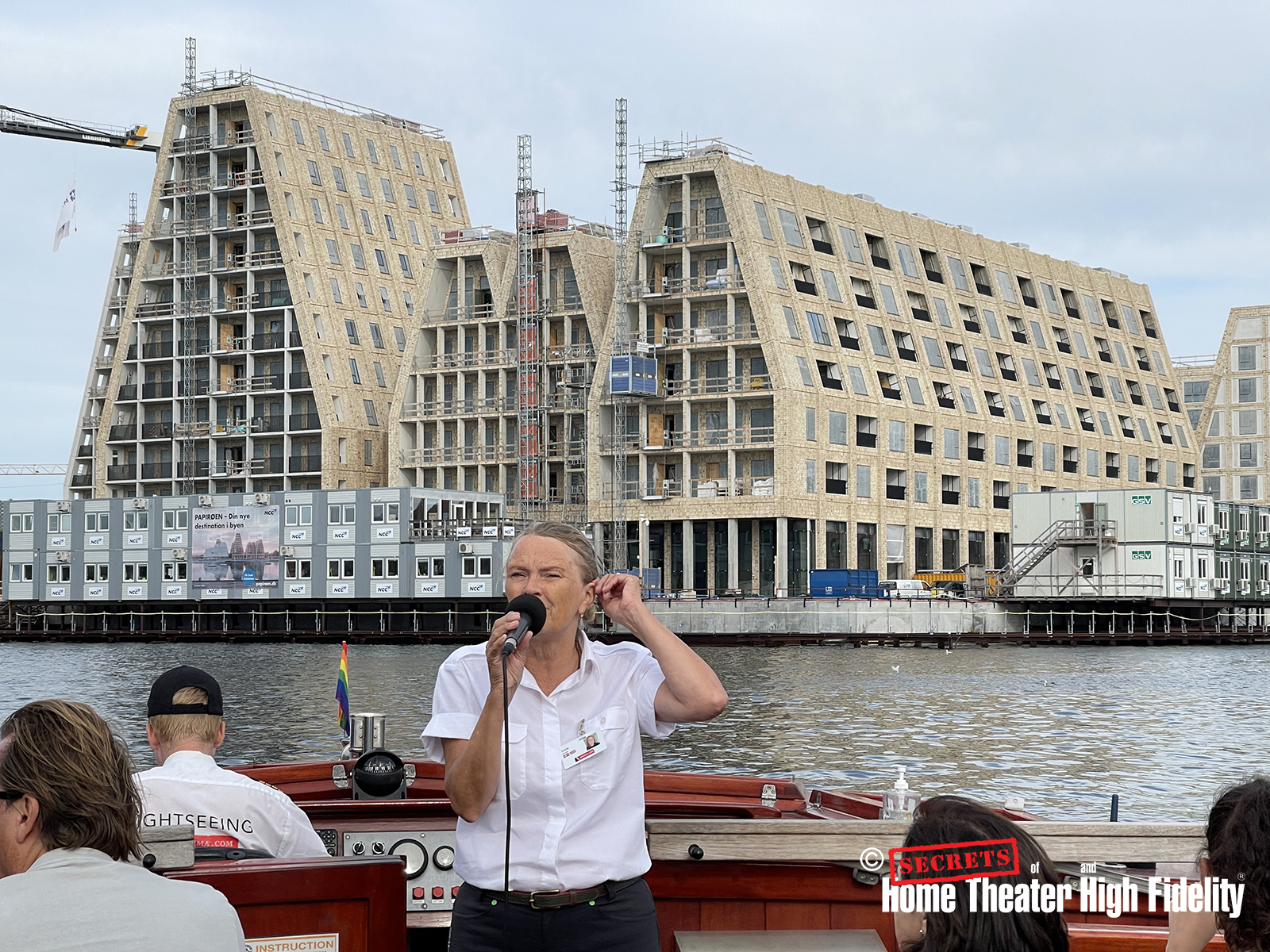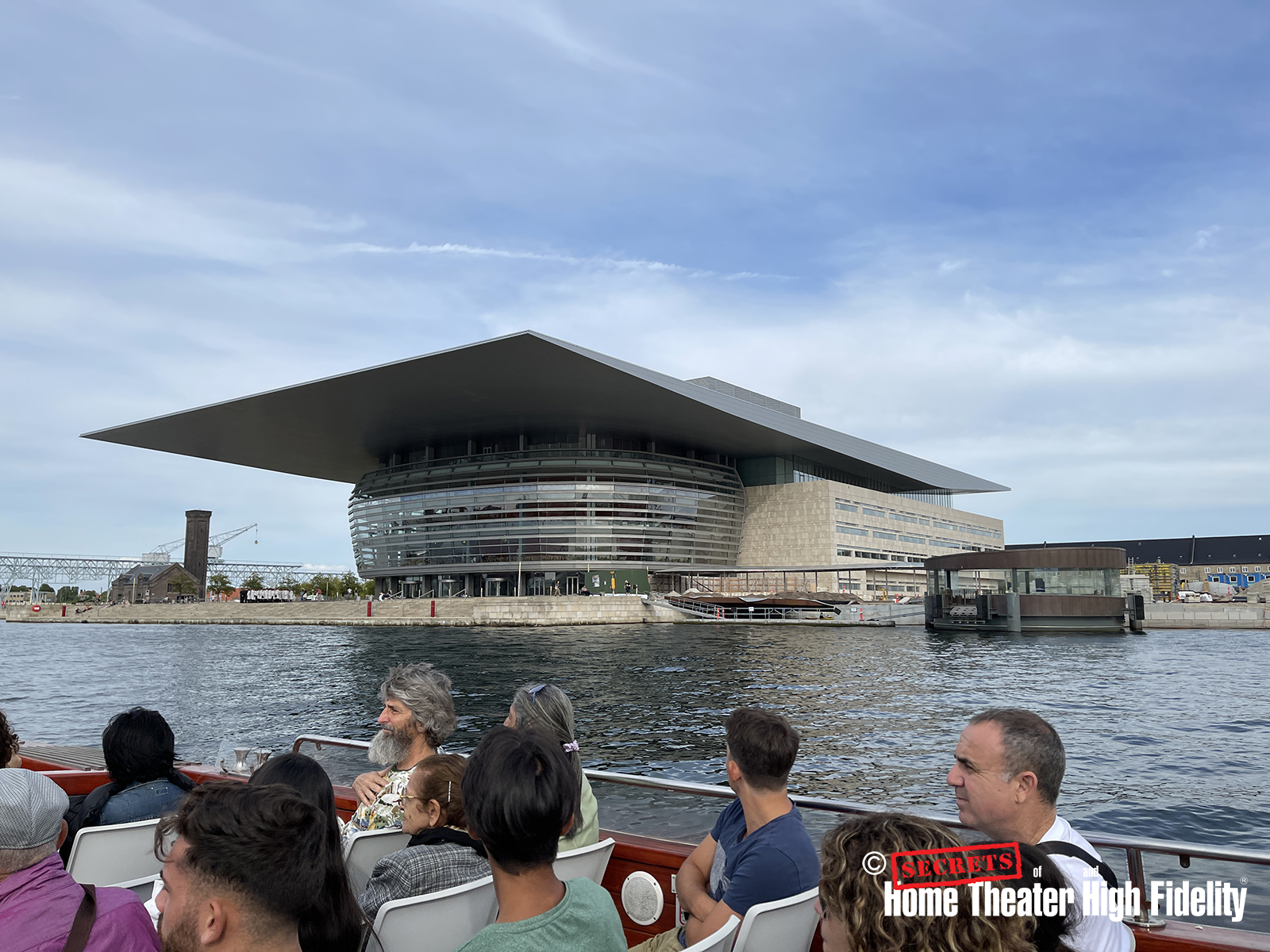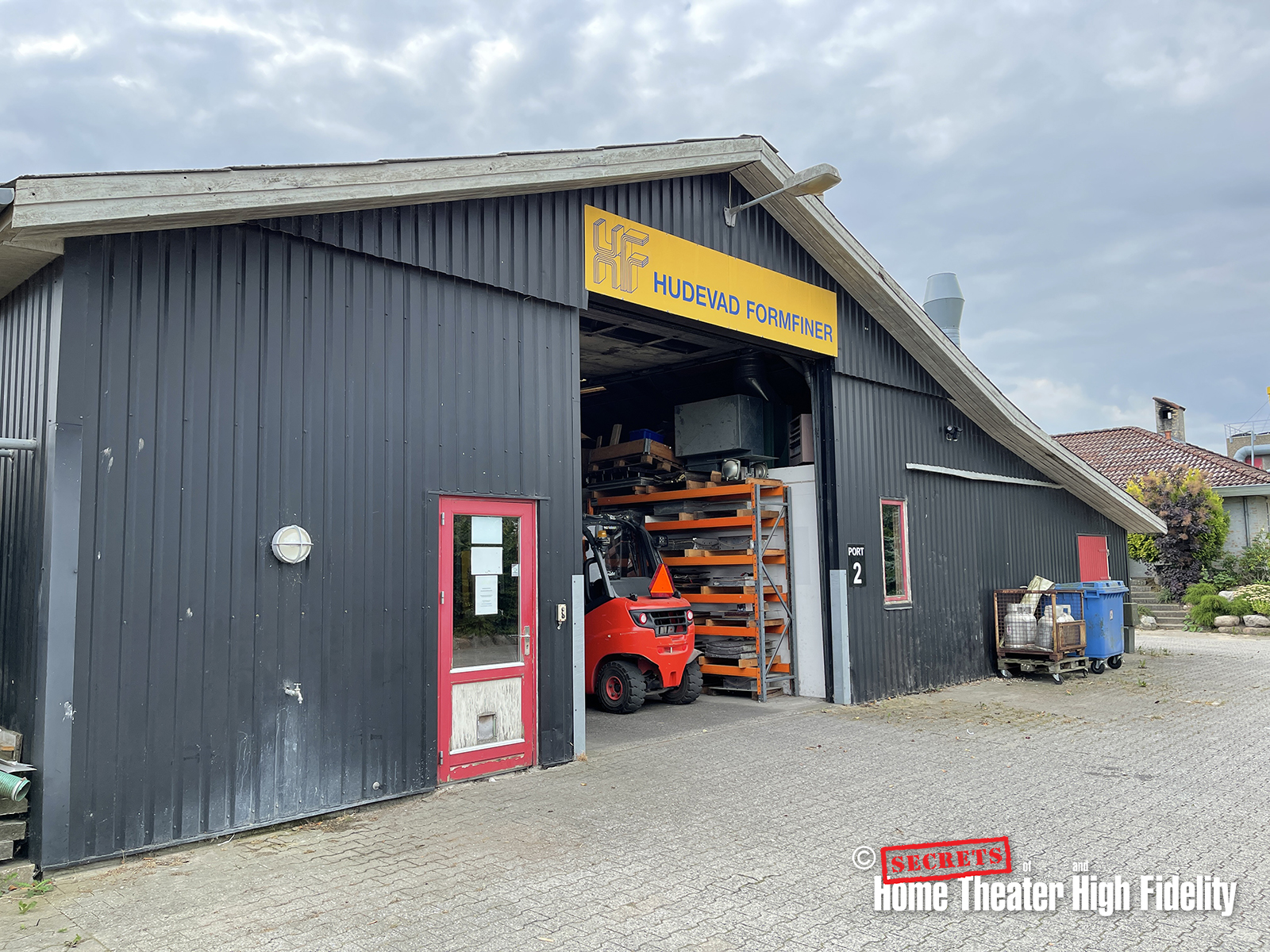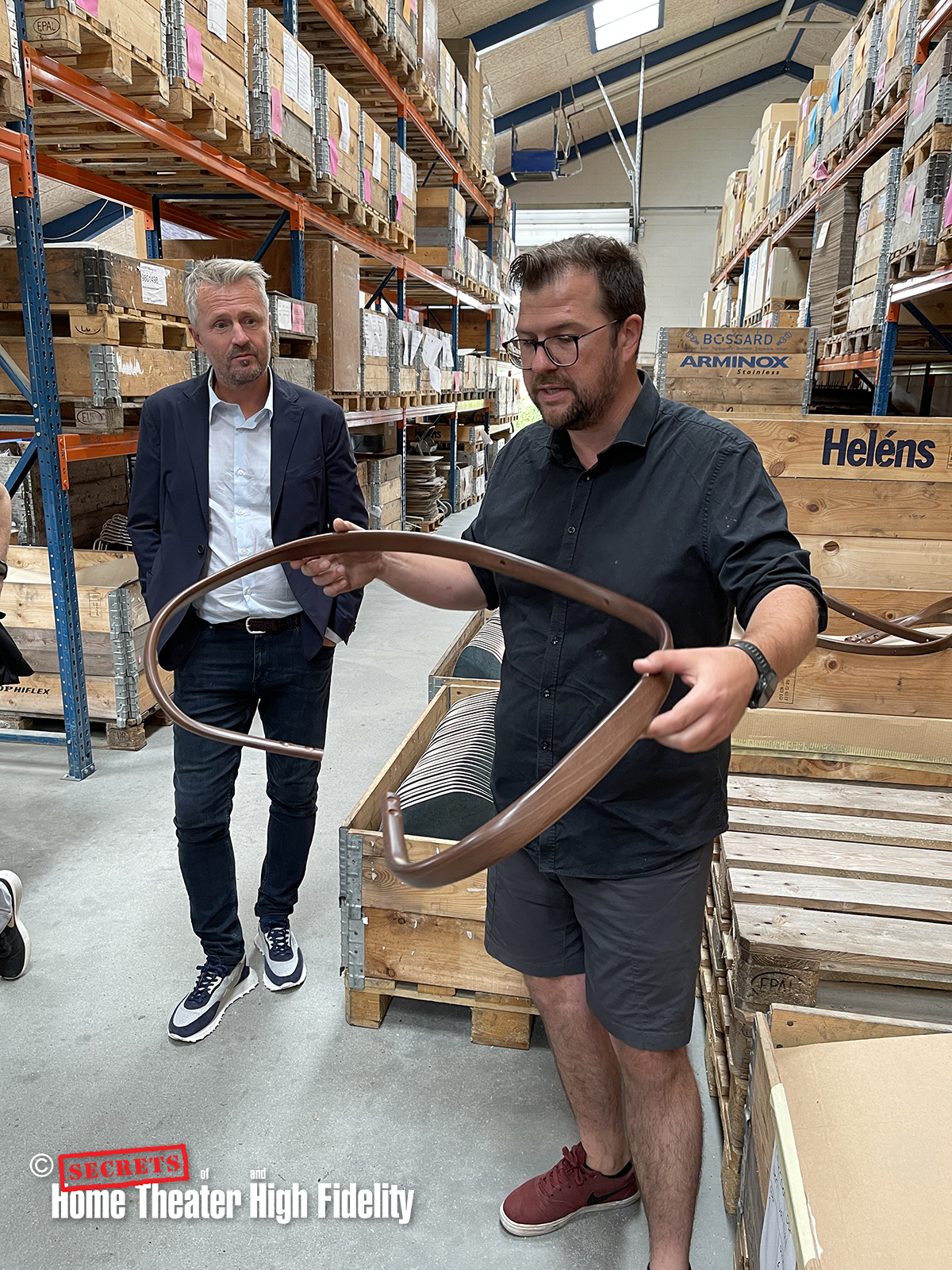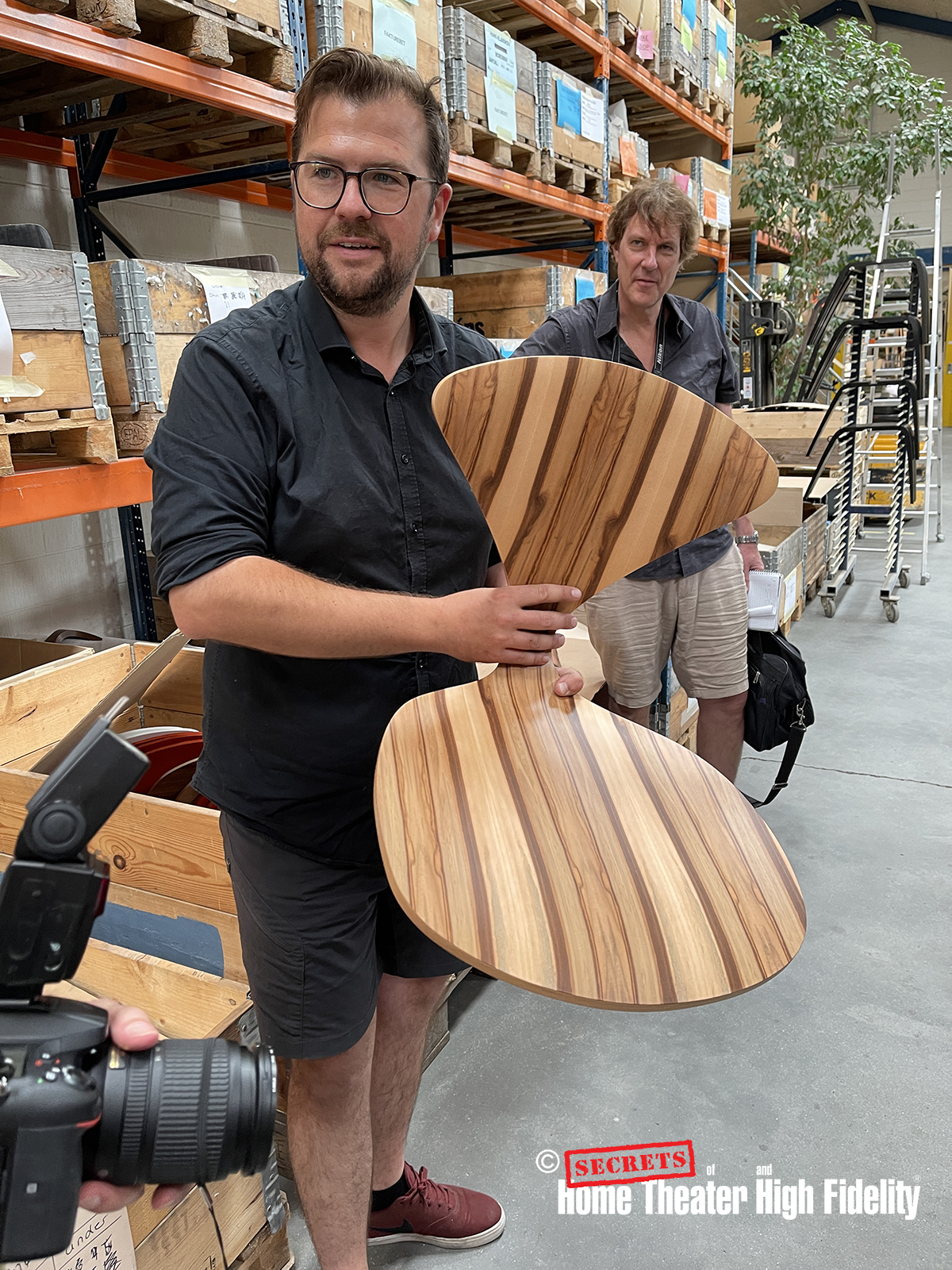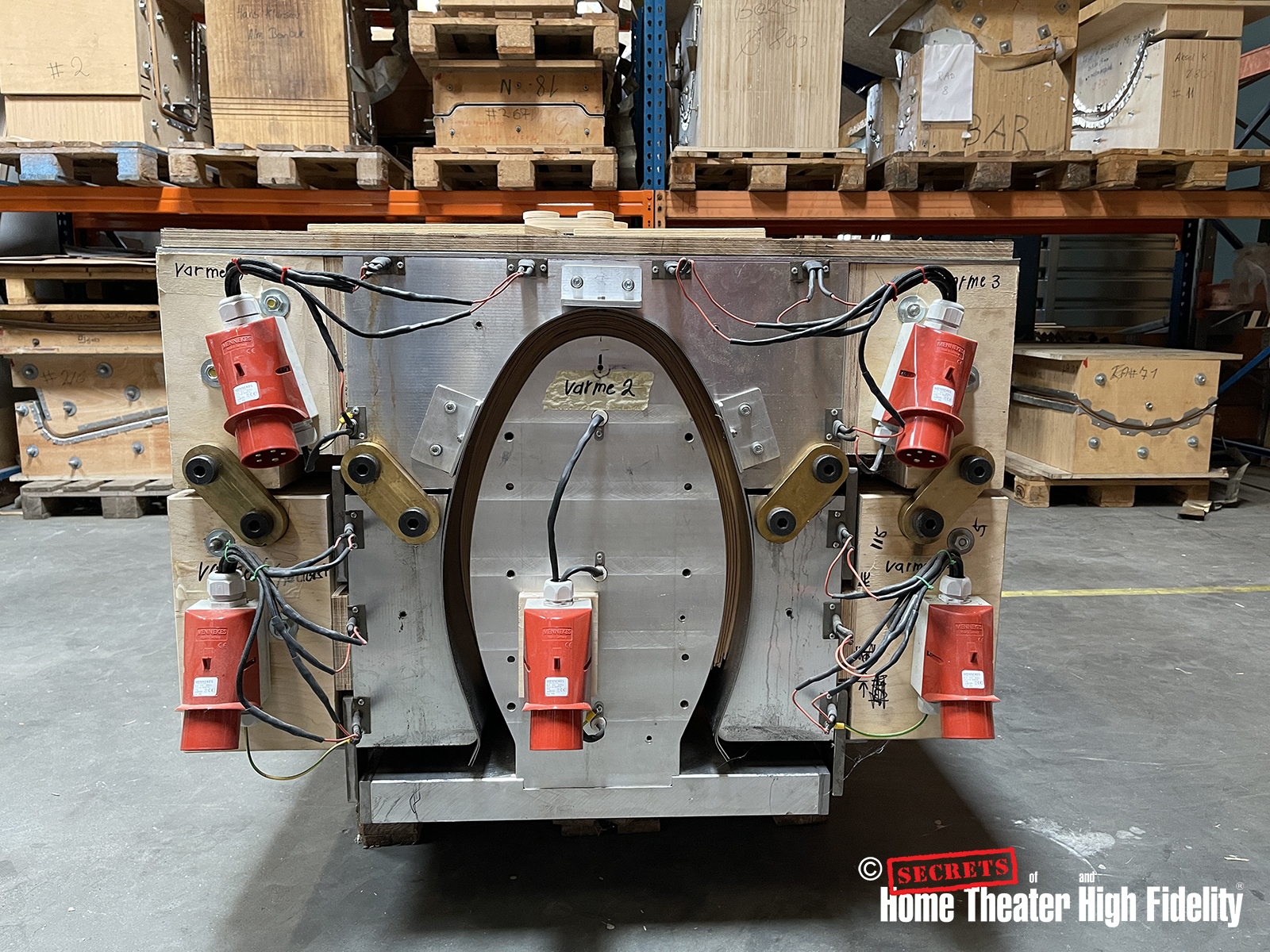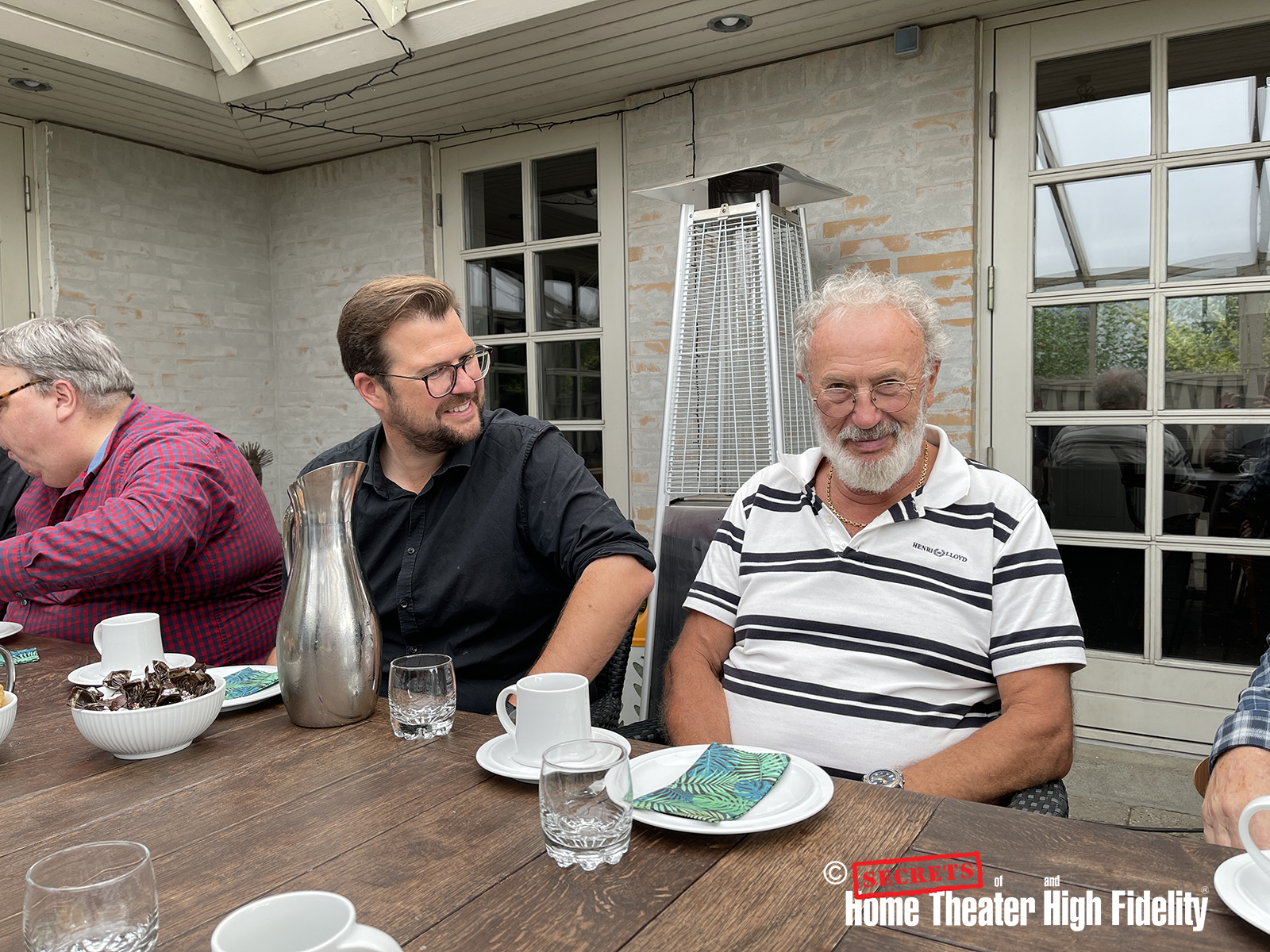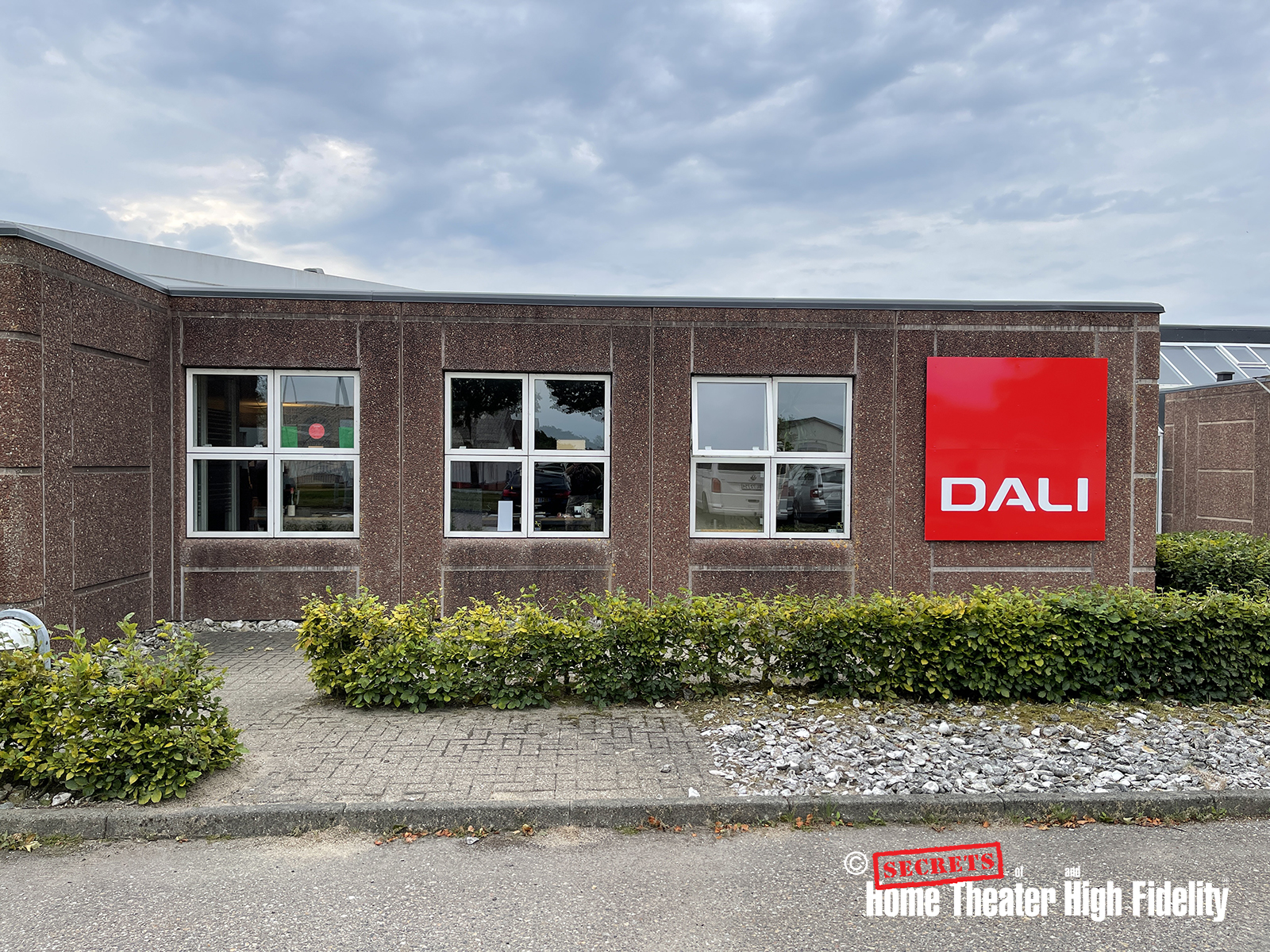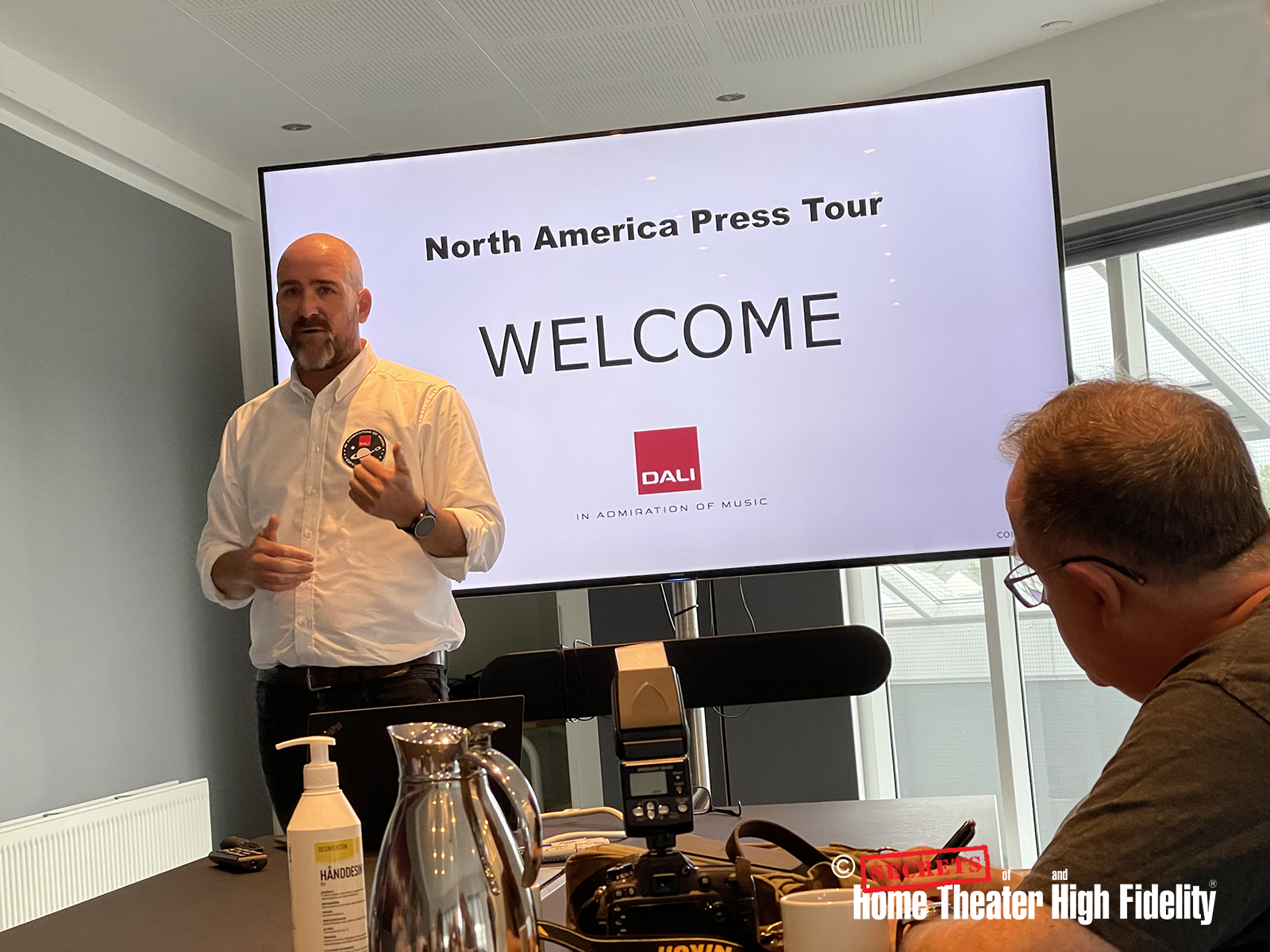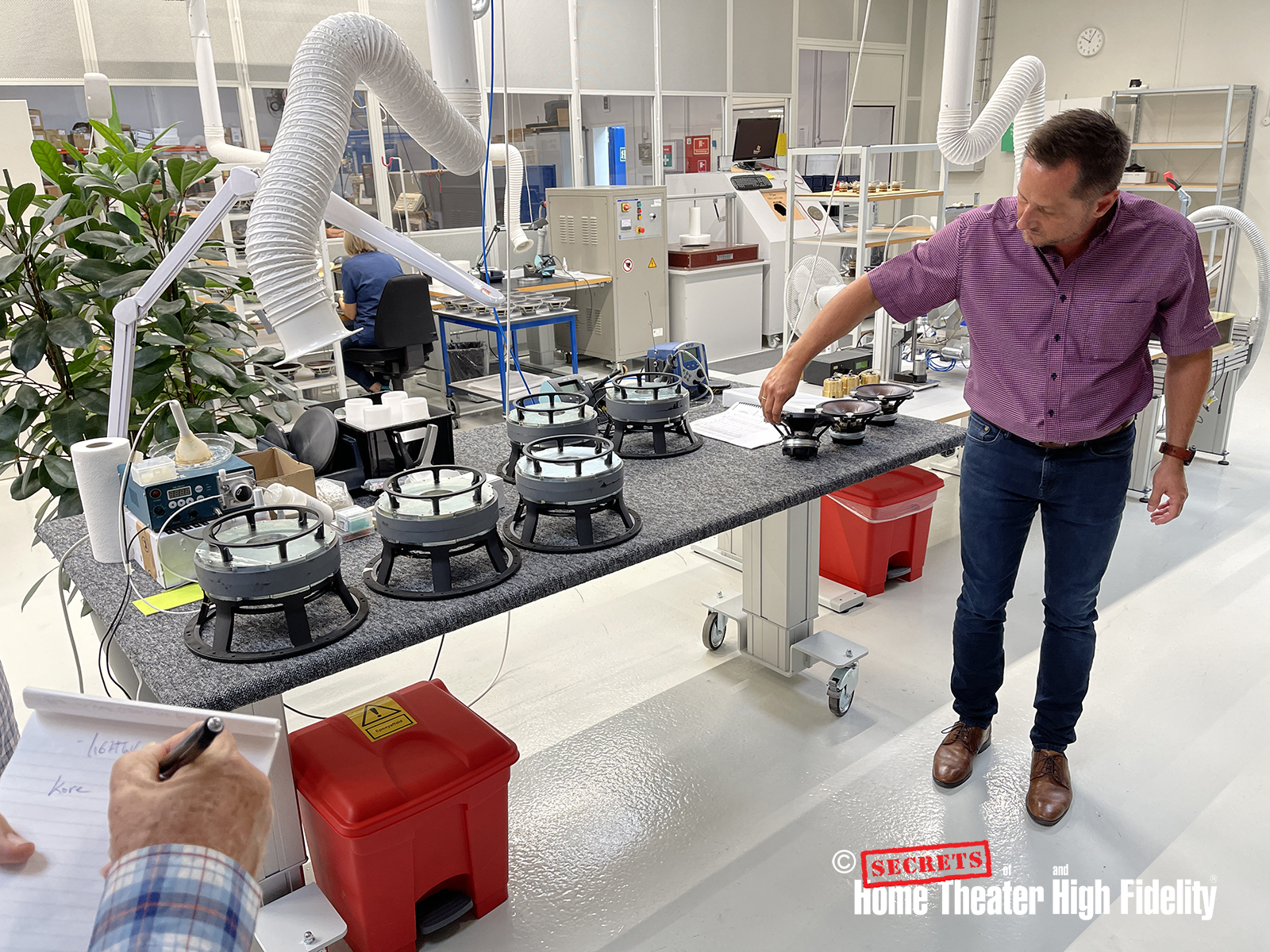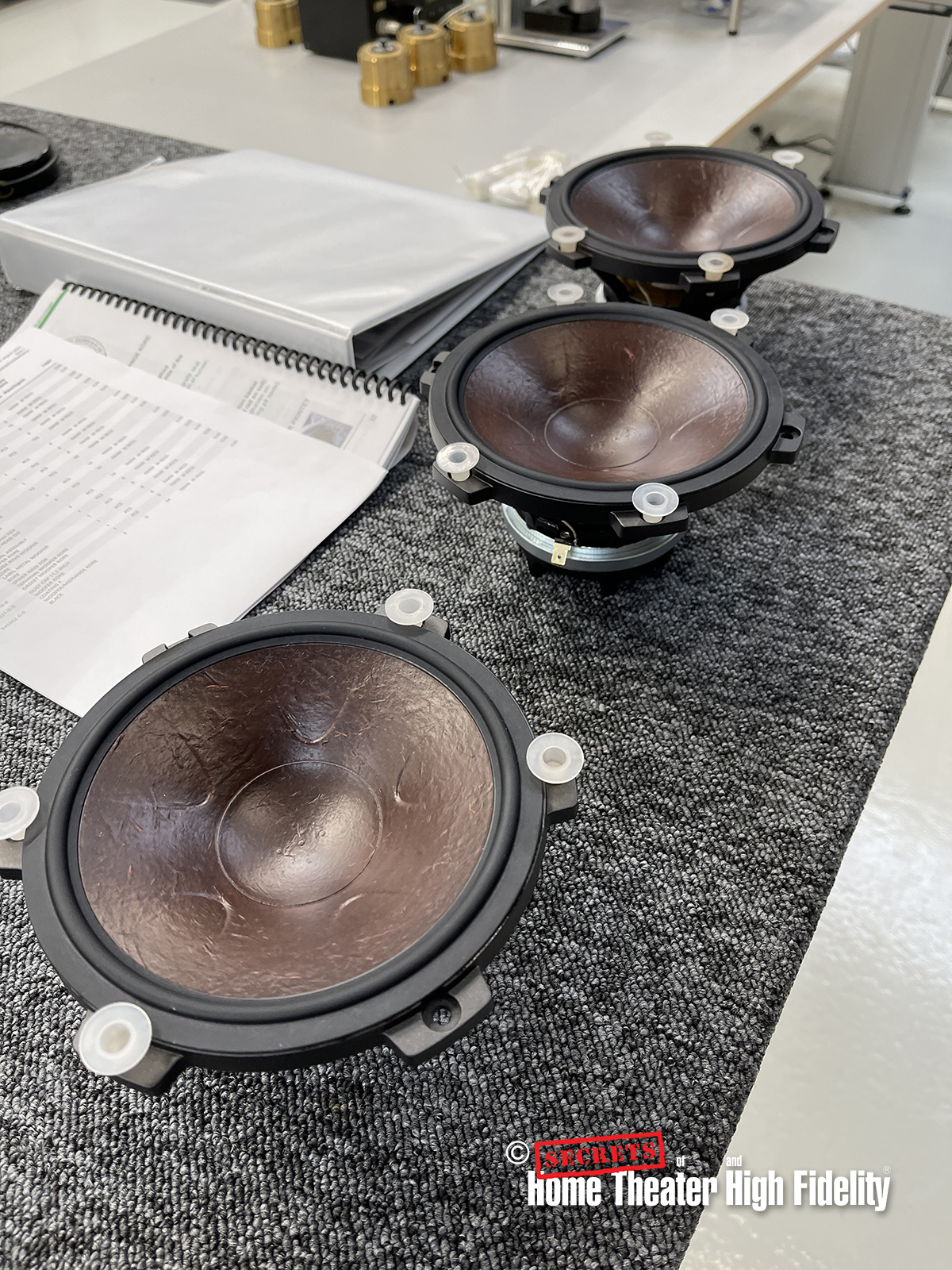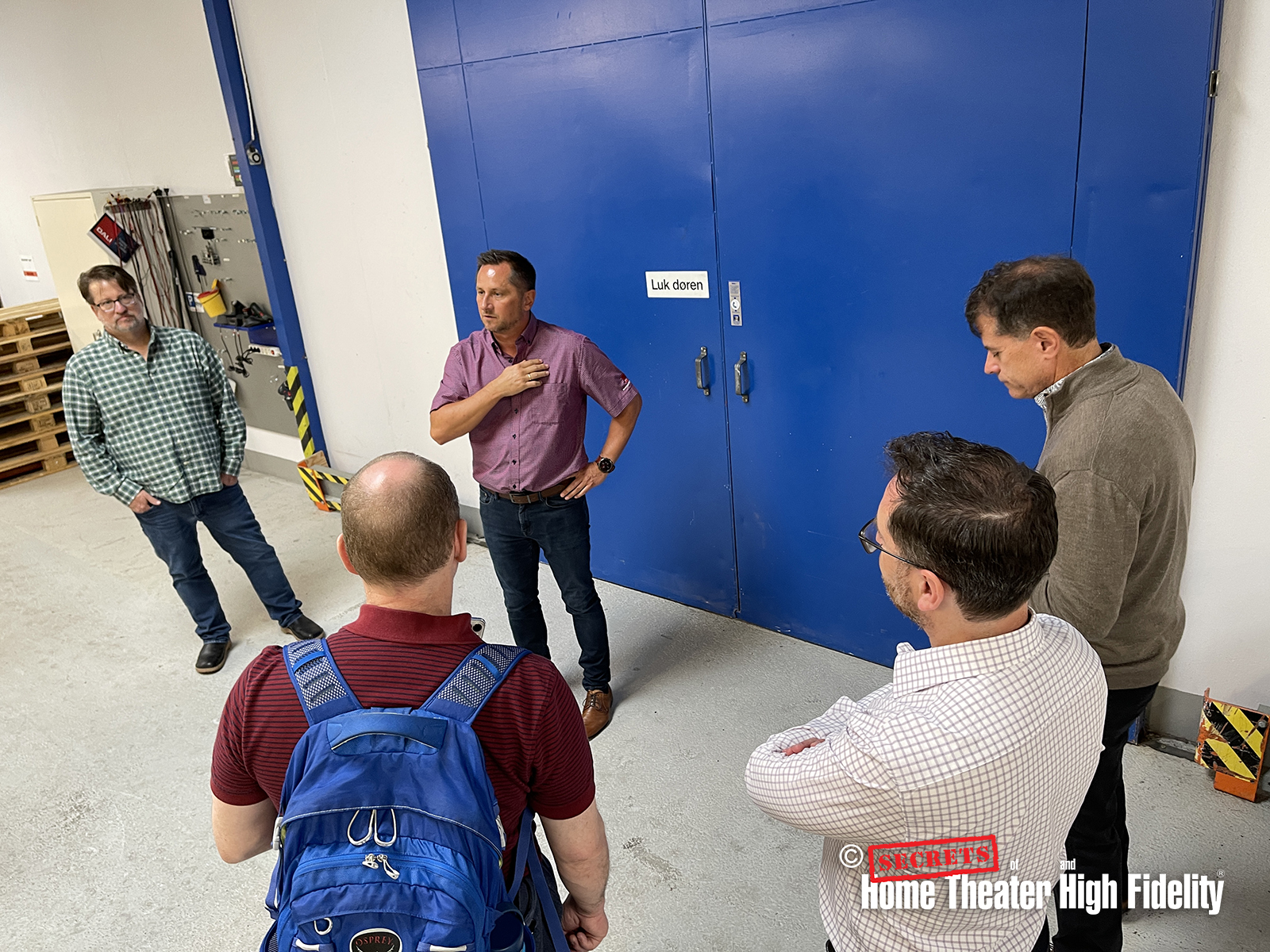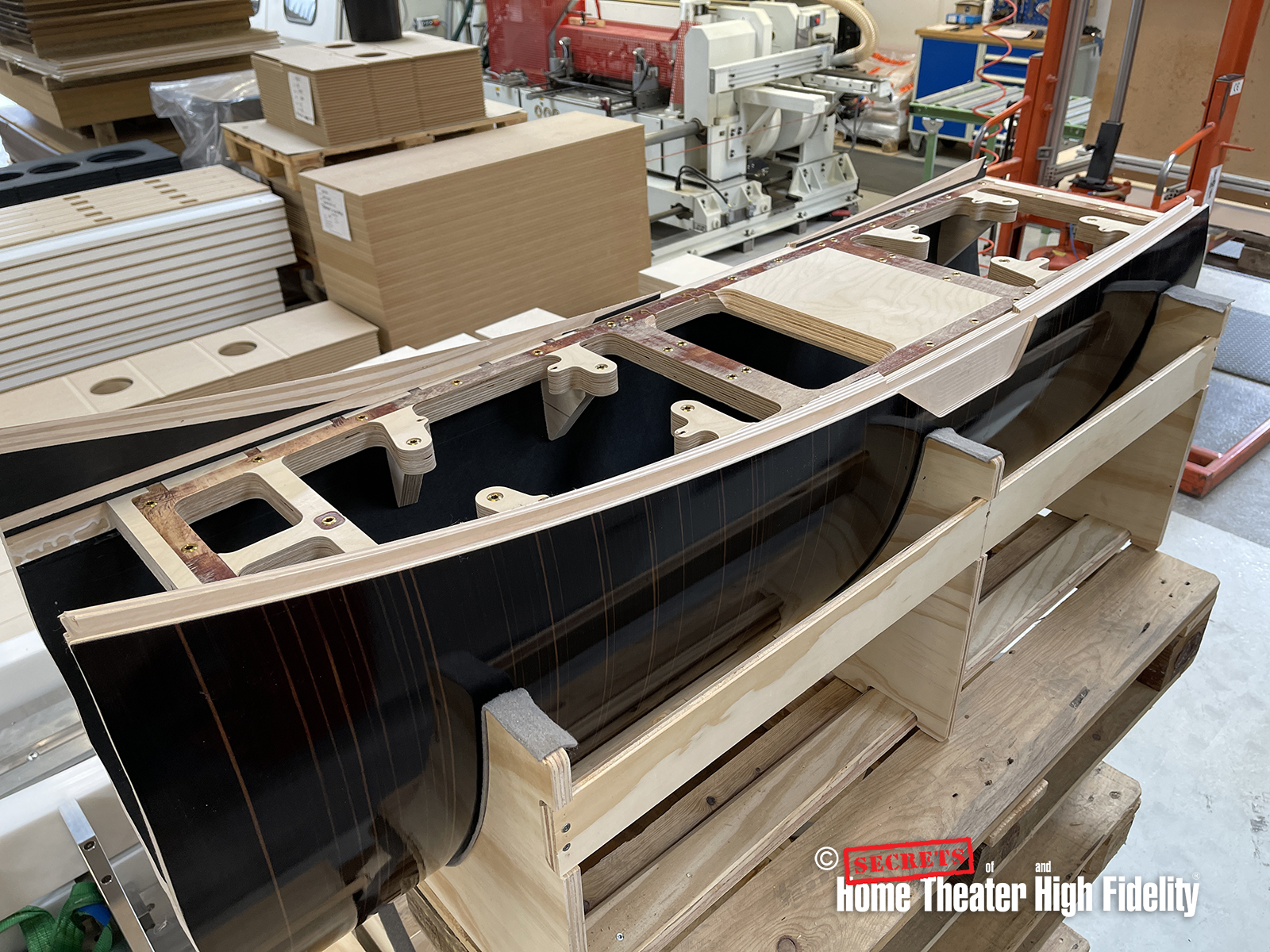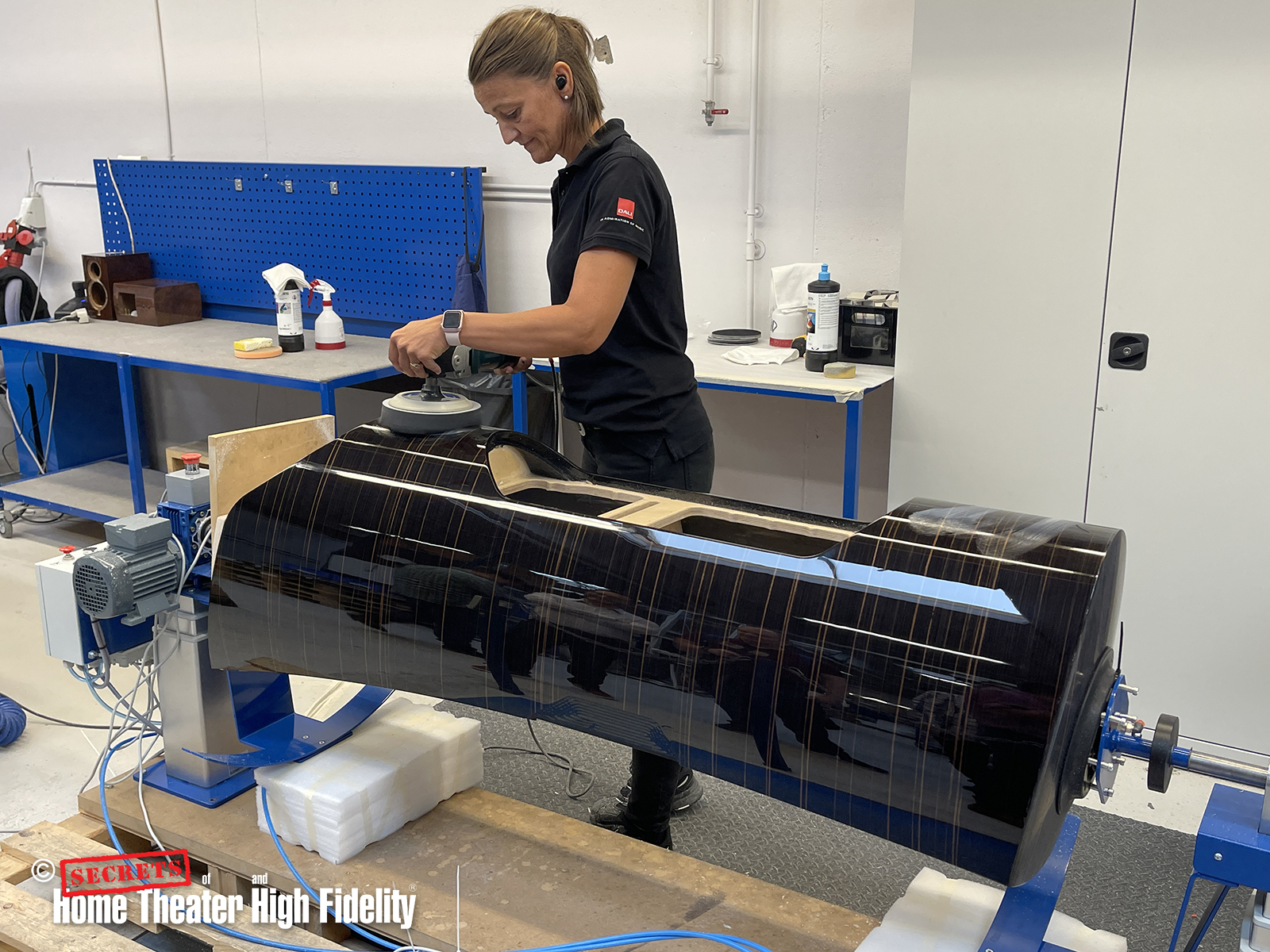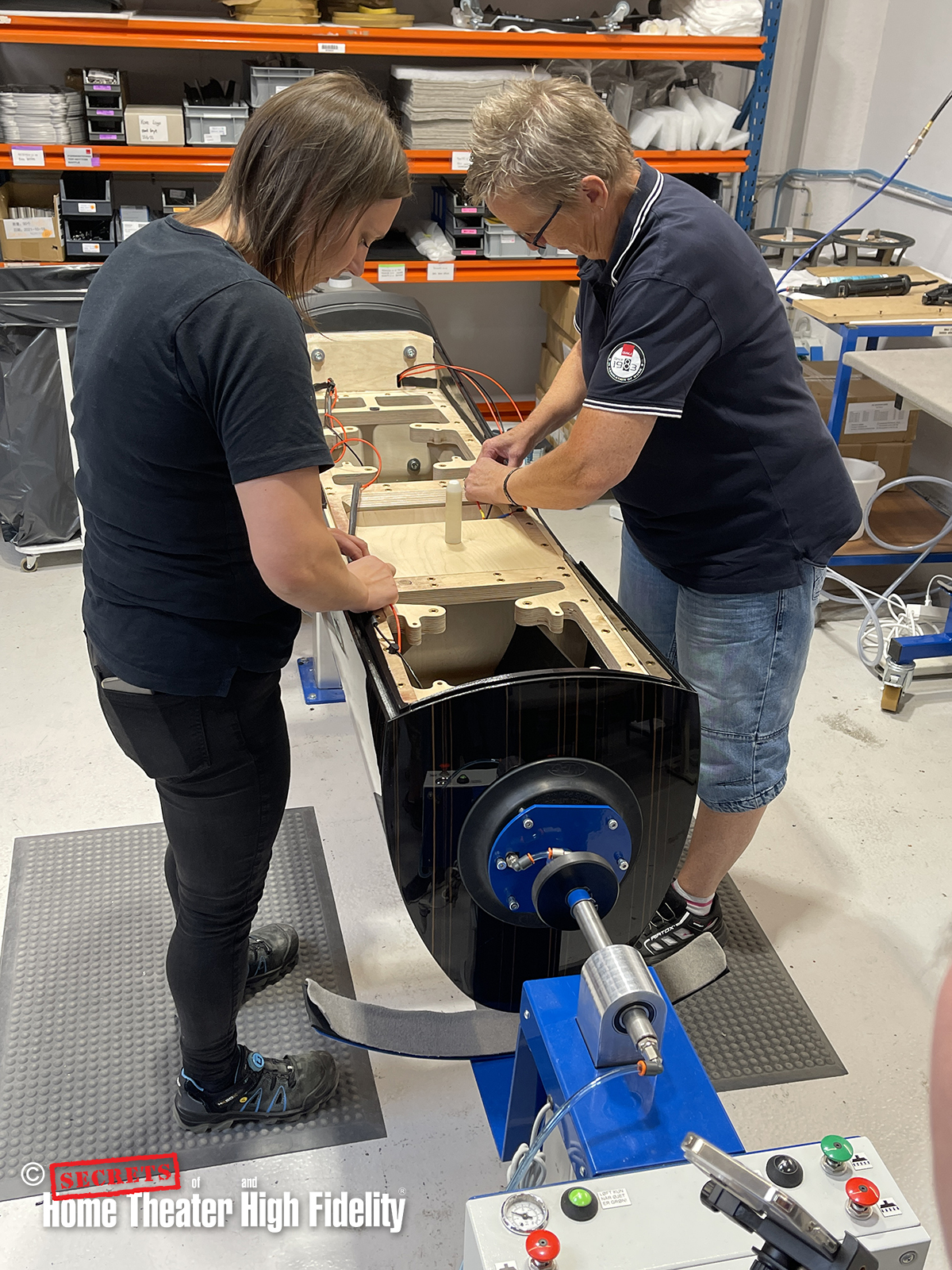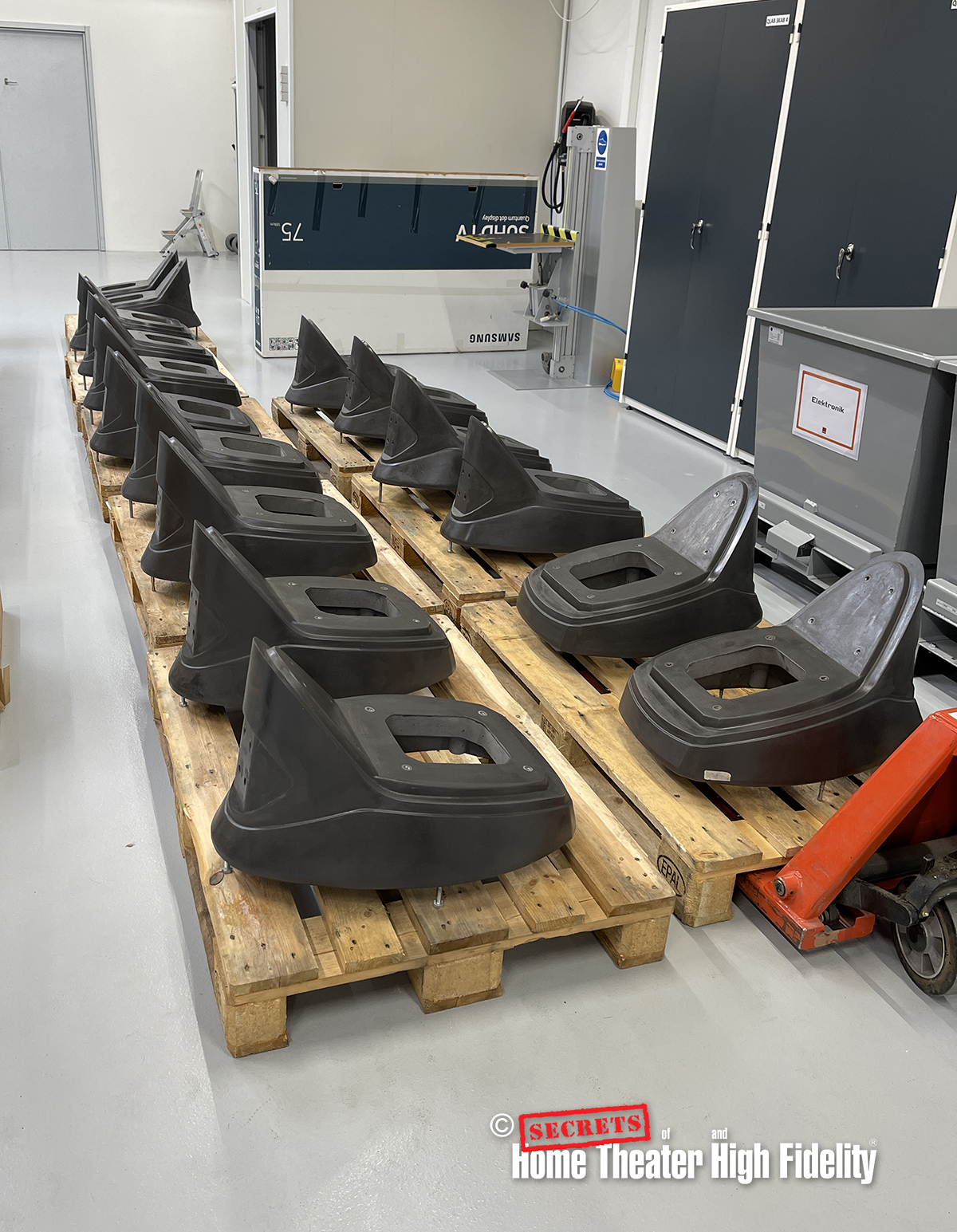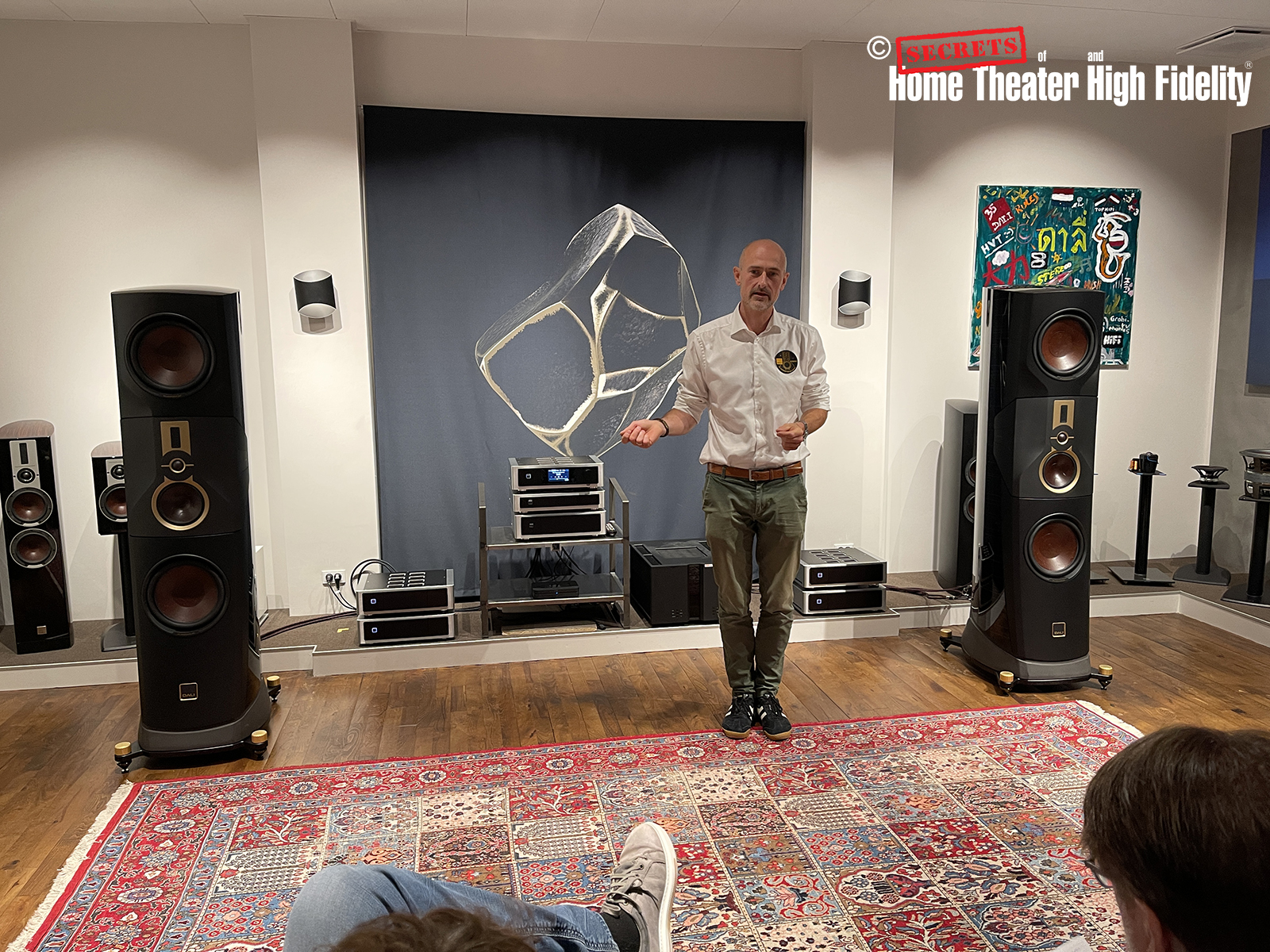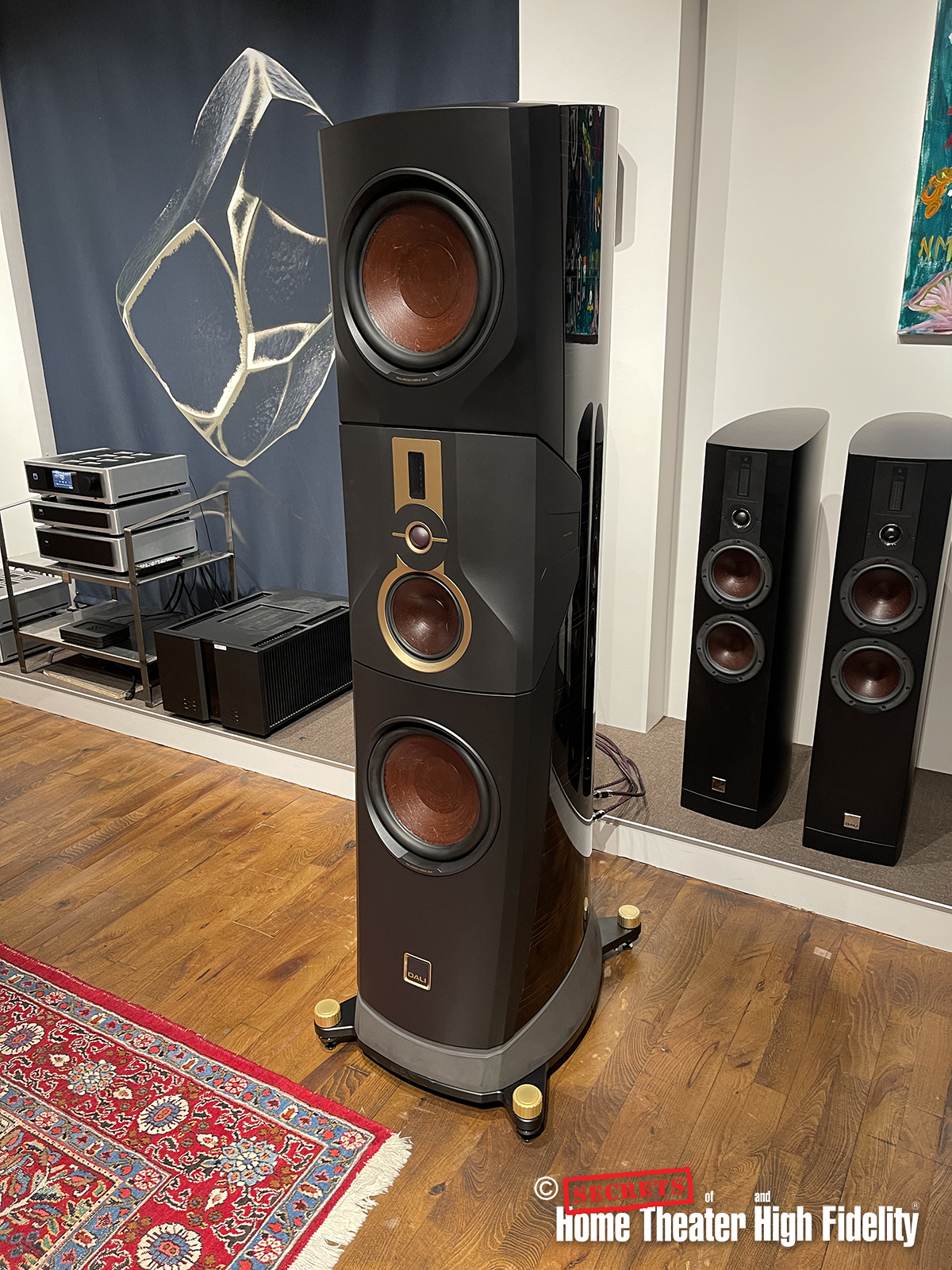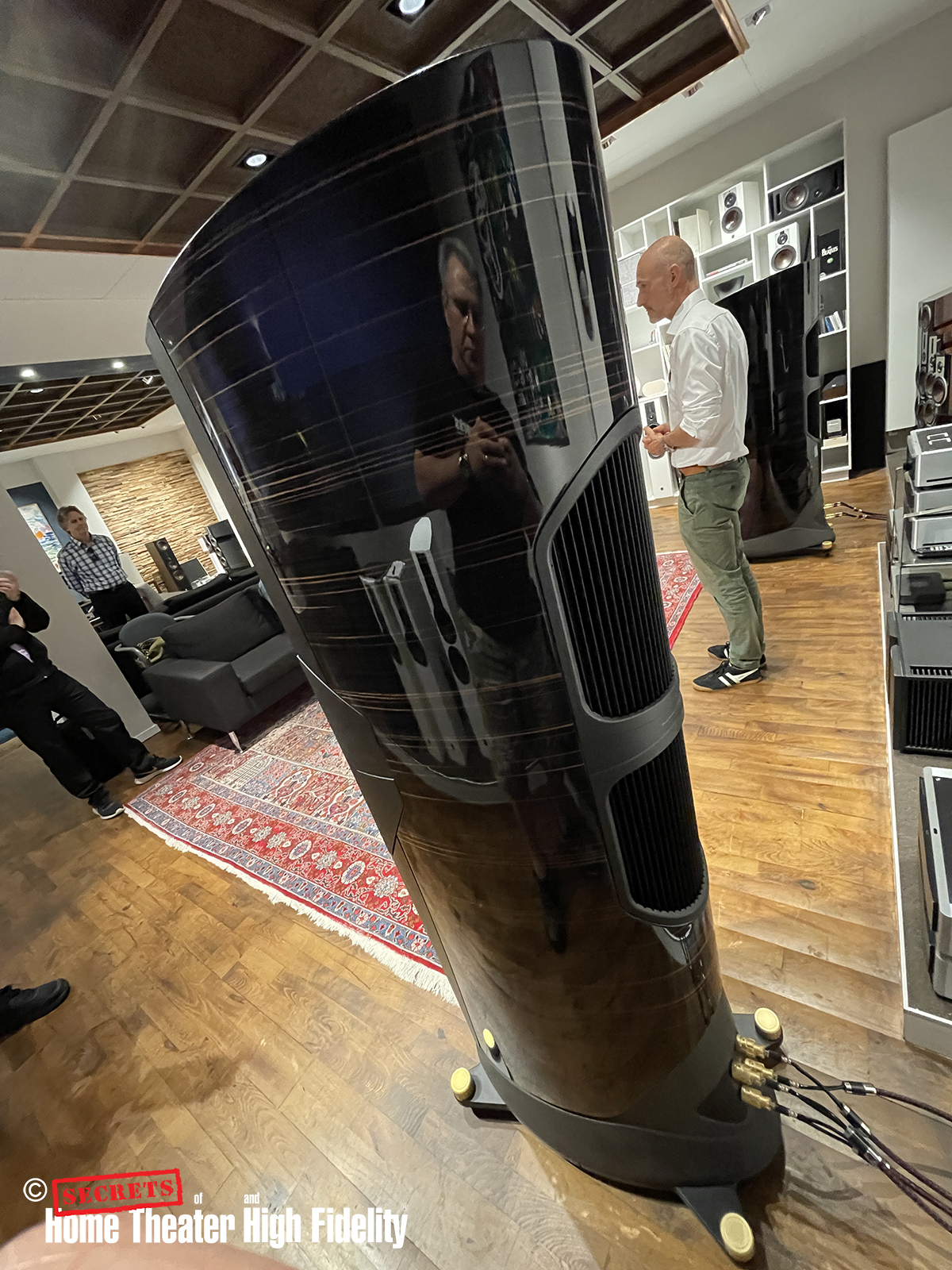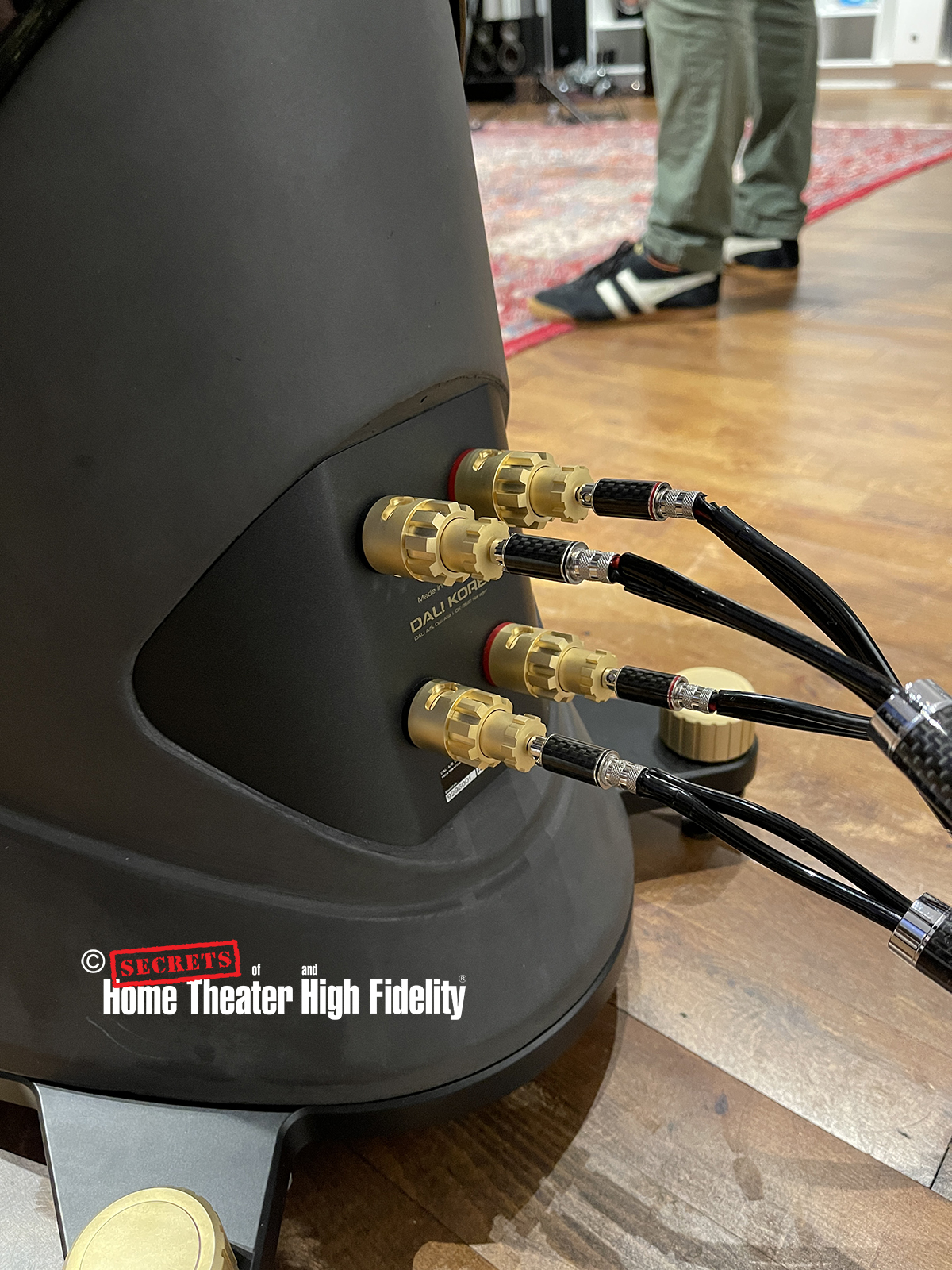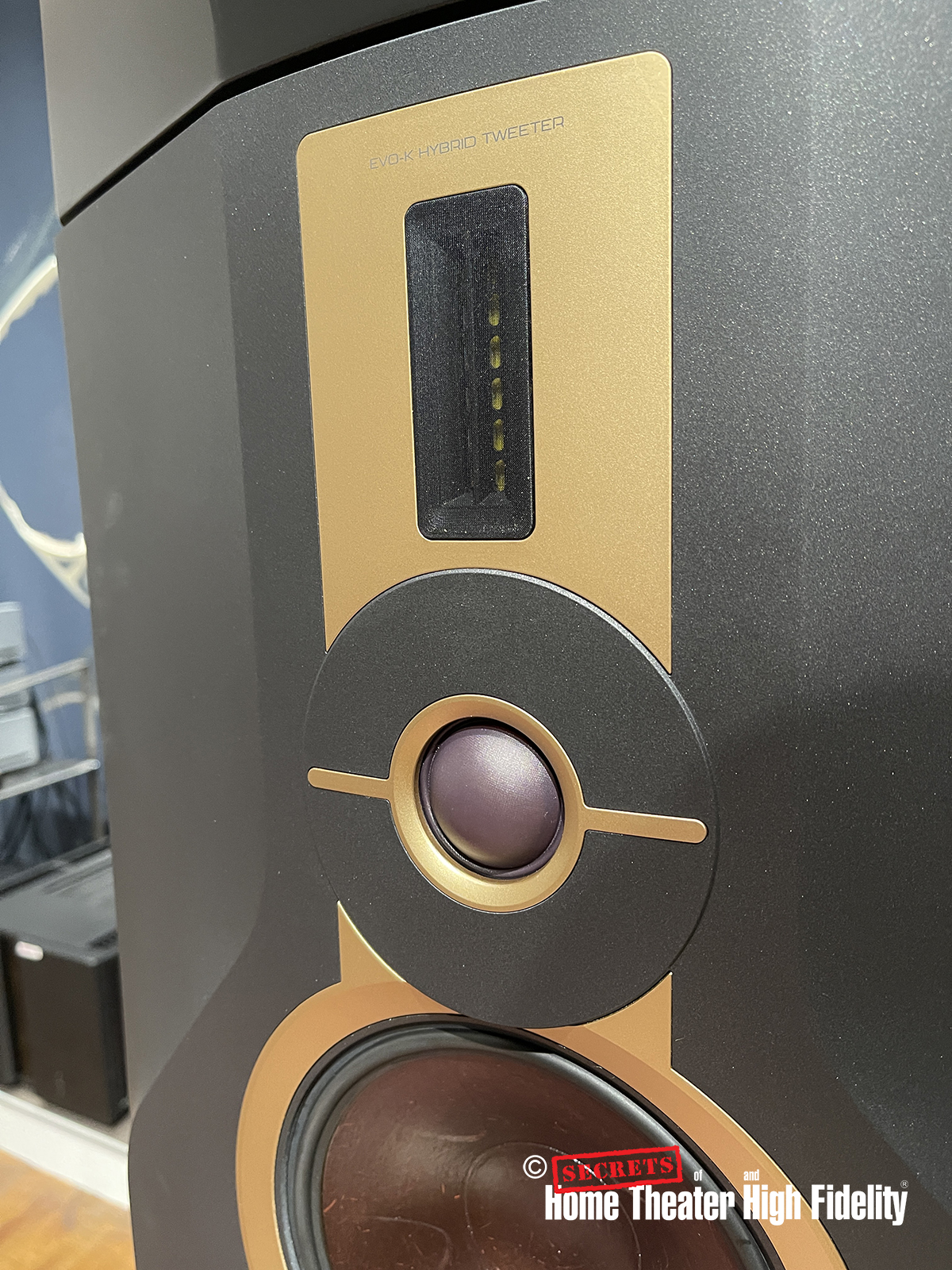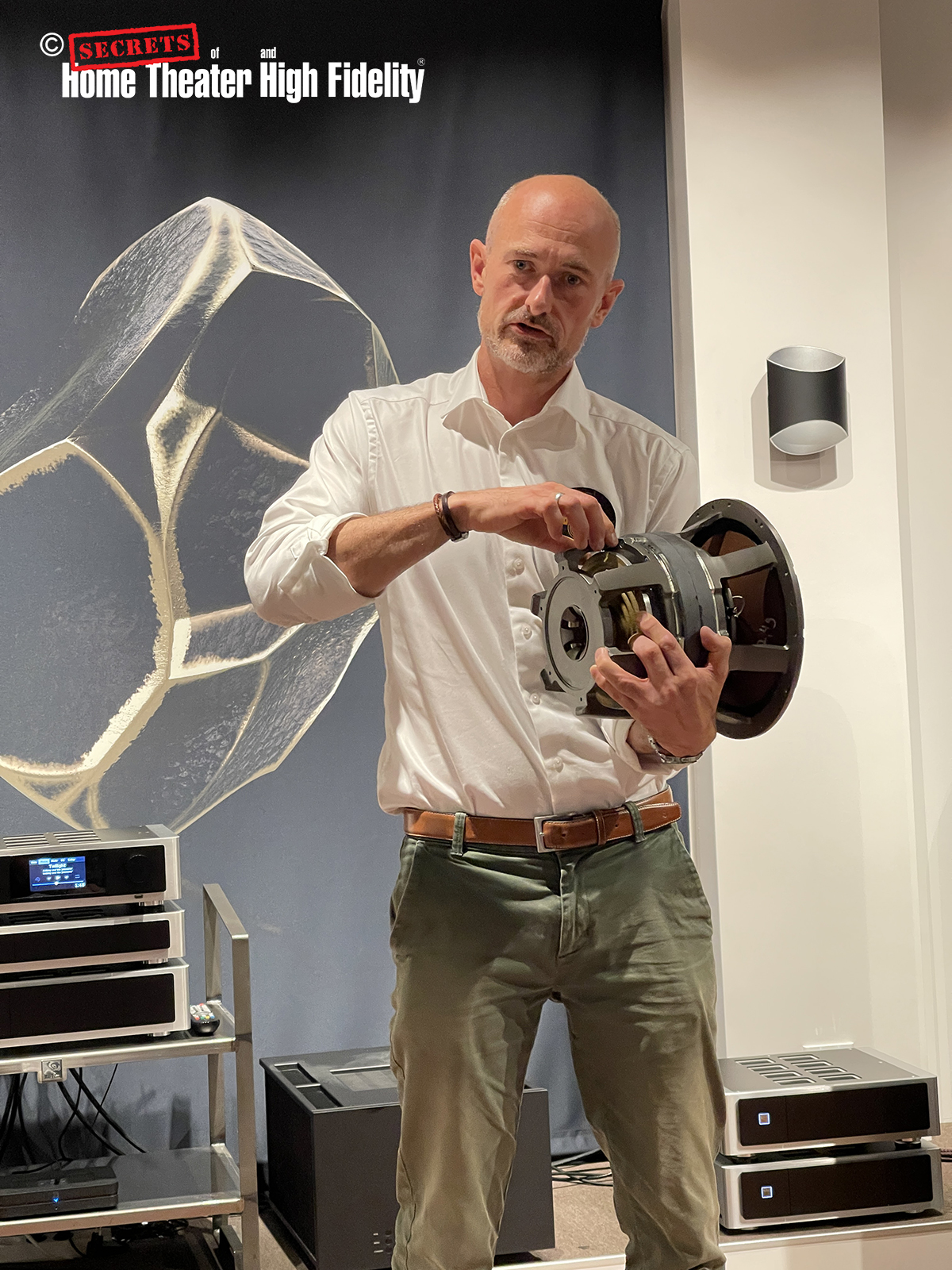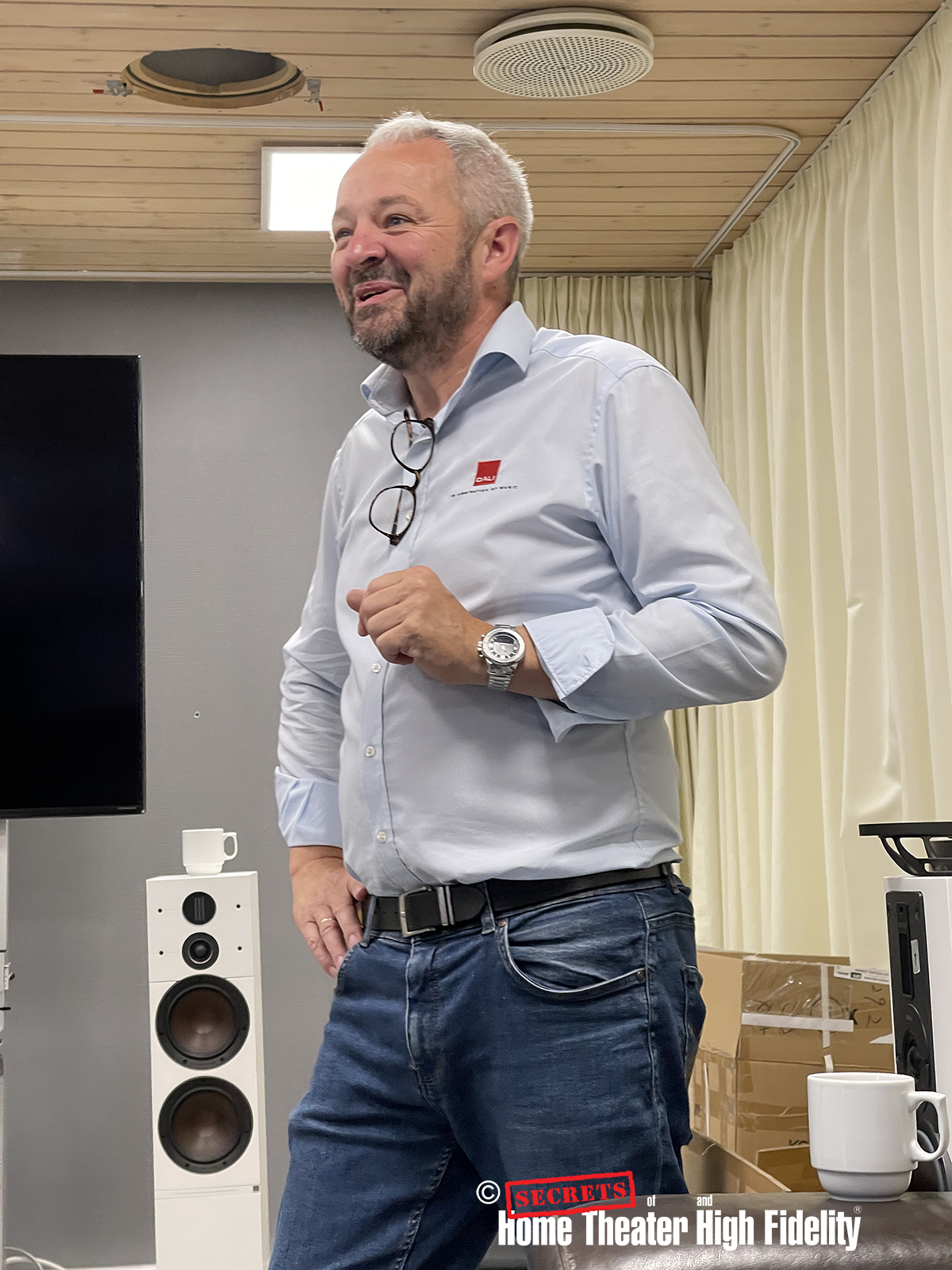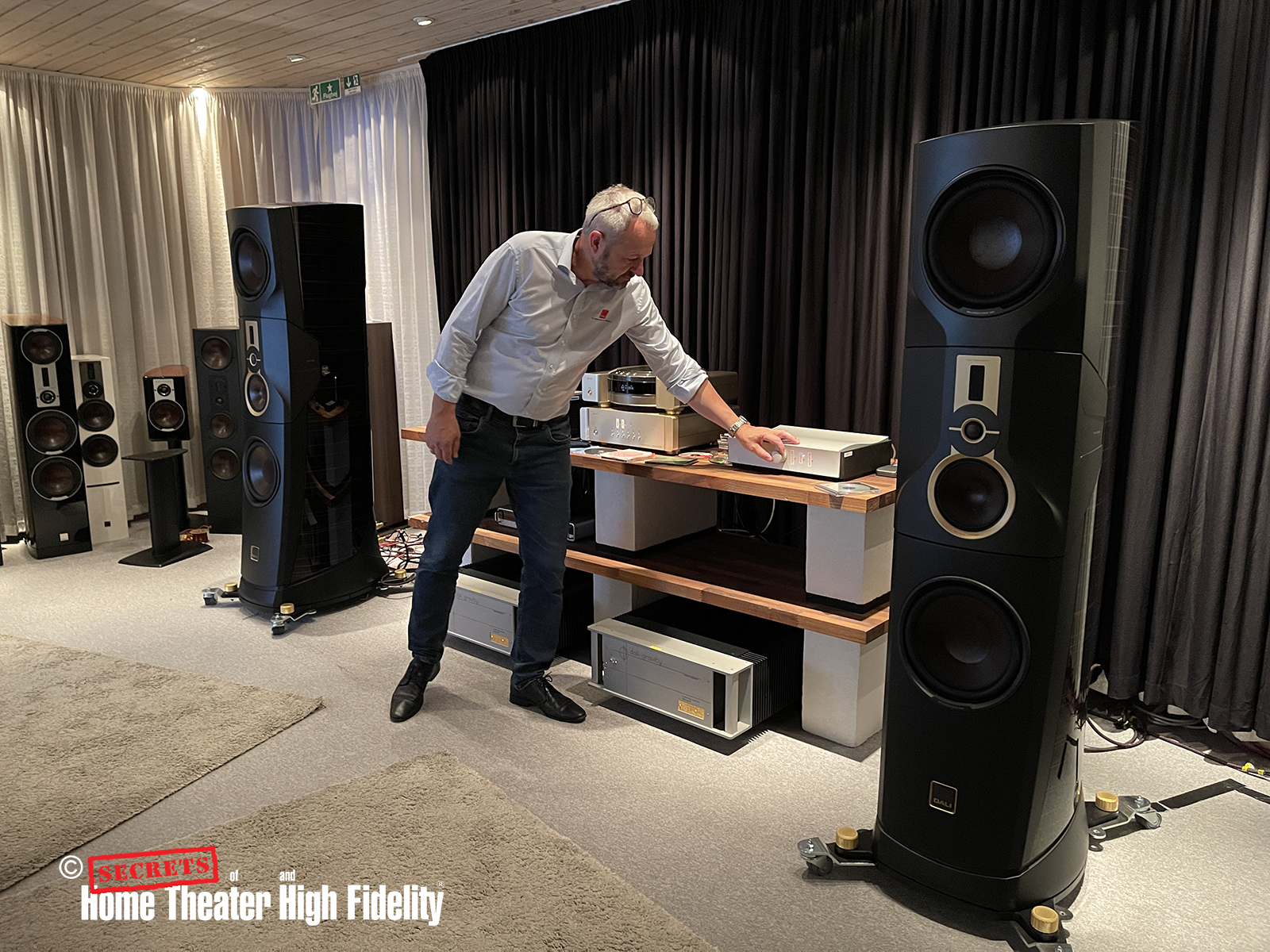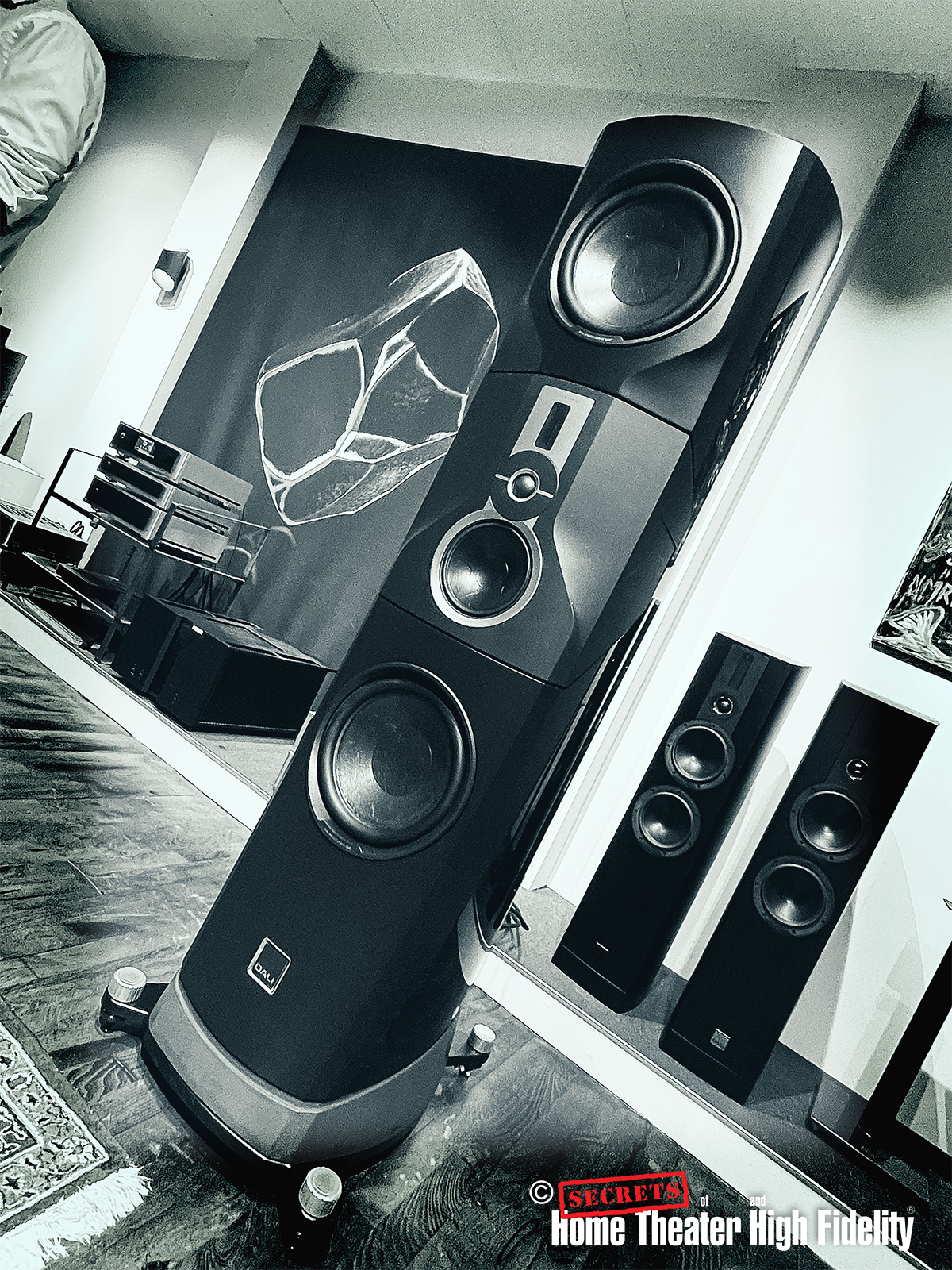“So how would you like to go to Denmark to visit the DALI factory and get a listen to the new KORE loudspeakers that they launched at Munich High End this year?”
After cleaning up the coffee that inevitably had spurt out my nose upon reading that emailed offer, I composed myself and replied in the only manner a red-blooded audiophile should when presented with such a generous request. “Hell yes! Throw me in a duffel bag and slap a shipping label on my backside, I’m there!” Visions of fine audio, pickled herring, and flaky pastries would fill my dreams for the coming weeks before I finally headed to the airport.
Let me first give due credit and thank DALI and North American distributor, The Lenbrook Group, for organizing this particular press junket and including me along for the ride. Putting one of these things together and sorting out the travel logistics for almost a dozen people from various points of our continent is an organizational challenge even when blessed with the smoothest of circumstances. Mother nature was not feeling so charitable however as a raft of severe thunderstorms across the Northeastern US and Canada caused major travel delays and missed connections for a number of folks on the day of departure. As frustrating as these unexpected circumstances can be for those of us doing the traveling, our friends at DALI and Lenbrook were on top of things providing updates and assistance for those needing attention for missed flights and delays. It was obvious that we were in good hands and that was greatly appreciated.
Having arrived in Copenhagen early in the afternoon of August 22nd, I was met at the airport by Thomas Knudsen, Senior Sales Manager for DALI, and was quickly introduced to a few of my fellow “Audio Journos” who had also just arrived and would be accompanying me on this little adventure. After introductions and sharing a few stories of our inevitable flight delays, we quickly made our way to the hotel to get freshened up and catch a breath. We met up about an hour later for a short briefing of what the next few days would entail and an invitation for a “Cliff Notes” tour around the heart of Copenhagen before dinner. Thomas would prove to be a most excellent tour guide!
Having never been to Copenhagen, there was a lot to discover and digest. The waterways that coarse through and around the city are integral to the local transportation and culture along with being a big part of why the city was both an economic center and seat of power during much of its history.
A surprising number of people live in boats that are moored on either side of the waterways almost as if they were cars parked along a suburban street. Comparatively speaking, modern Copenhagen is very clean and well-maintained. The waterways are safe to swim in and are a healthy home to several species of fish. Much of the city is walkable with several low-incline walking bridges that extend over the waterways to connect areas that are in fact man-made islands. Bicycles are everywhere here, hordes of them, taking citizens quietly and efficiently to their destinations.
There is also a fascinating blend of both classic and avant-garde modern architecture running throughout the area. Somehow though it wasn’t jarring to see such a drastic clash of visuals in this environment. Those wily Danes have made it work for them.
Thomas hustled our little group onto a tour boat for a run through the waterways where we got a good overview of our surroundings. Listening to both Thomas and the boat guide describe the places and things we were seeing as we passed under what seemed the umpteenth low walking bridge, I get the sense that there is both a profound respect for tradition and history here along with a deep-running streak of chance and risk-taking. The harmonious dichotomy of what I was seeing in this city tells me there is a lot of independent, original thinking going on among our Danish friends and a not-so-small amount of pride felt in doing things their way. I get a distinct feeling that this will be a re-occurring theme in the days ahead.
The next day saw our intrepid little group clamber onto a small bus for a drive northwest to the town of Arslev. Driving well into the countryside, it is here that we would arrive at a neatly arranged industrial park where we would find Hudevad Formfiner. Hudevad is where the cabinets are constructed for the new DALI KORE flagship loudspeakers before they are shipped to DALI in a rough state. Final finishing and assembly for the KORE are done in a dedicated area of DALI’s assembly room.
For a project as important and specialized as the KORE, DALI knew that it was vital to source almost all the components domestically. Not only as a safeguard against the various supply disruptions we’ve all been experiencing but also to showcase the best of what Denmark has to offer. To that end, all of the KORE’s critical components are produced or sourced within a roughly 2-hour drive from DALI’s main office. So critical and specialized are Hudevad’s skills in the areas of wood forming that DALI has made a significant financial commitment in the company to secure its know-how for the foreseeable future.
Hudevad Furniture was started in 1967 by Erik Jørgensen and is now overseen by his son Kaare. Many of the presses and jigs they use are designed and built in-house, but they also have several Italian woodworking machines from the 60s that are still in operation and an elaborate 5-axis CNC machine at their disposal.
Kaare Jørgensen was a humble and gracious host, and he gave us a full tour of the facilities. He began by showing us some examples of very stylish Scandinavian wood furniture and accessories that are done not only for the domestic market but are also available in North America. He wanted to highlight exactly what they could do with wood bending and forming all the while adhering to some of the most stringent environmental protection standards in the world.
Walking around Hudevad you immediately wonder, where is all the sawdust? For a woodworking shop, the place is impeccably clean with no chemical or adhesive smells of any kind to be noticed.
When the subject turned to the KORE cabinets, he explained to us how they are constructed from 17 sheets of 1.5 mm birch ply. The grain direction of each sheet is oriented perpendicular to the sheet below it thereby increasing the respective strength of the final product. There is formaldehyde-free adhesive applied between each layer, finishing with a layer of fine ebony veneer for the outside. This Neapolitan wood sandwich is then put into a custom-made jig/press that I can only describe as something a mad scientist would have put together.
The jig has a central core of solid CNC’d aluminum surrounded by extensive wood bracing. Several heating elements running the length of the jig are embedded in both halves of the aluminum form. Once the layered wood and veneer sandwich is placed in this contraption, 180 bars of pressure is applied combined with 61 kilowatts of electricity to heat the jig for 20 minutes. After which the cabinet will be fully set and cured and ready for finishing at DALI.
After the tour, the Jørgensen family treated us to coffee and sweets at their home which is right next to the factory. Seated around a table on the back patio we chatted for a good while about the company and its involvement with the KORE project. Each member of the family was justifiably proud of the partnership with DALI. To be able to demonstrate the quality of workmanship that they (and by extension Denmark) can offer on such a high-visibility project is priceless. And yet there is no sense of boasting or self-congratulation at all about this partnership. Just the typical quiet Danish confidence and knowledge that they can do exactly what they set their minds to. Judging from what I saw this day, I don’t think this will be the only project that the two companies will be collaborating on.
Today saw our bus full of audio press hooligans arrive in the town of Nørager and pull up to the front door of DALI HQ, proper. This would be the first of two days here that would see us learn more about both the company and the new KORE loudspeakers. In case you weren’t aware DALI stands for Danish Audiophile Loudspeaker Industries. The company was founded in 1983 by Peter Lyngdorf, who still owns a controlling interest in the company but is not so much involved in the day-to-day operations.
We were first met by Nicolaj Løve Hansen, DALI’s Chief Commercial Officer who began walking us through the rationale for the KORE’s existence. According to Nicolaj, several considerations and strategies all coalesced at about the same time allowing the KORE to come to fruition.
First, while DALI owns and operates a dedicated factory in China, discussions had already been well underway about consolidating as much production and sourcing domestically as possible. COVID, supply chain issues, the Ukraine situation, etc. simply confirmed that the timing was right for such a move. The KORE would be the perfect halo project to test the viability of that idea on a demanding scale.
Second, DALI felt like, while their current speakers compete well with the likes of Bowers & Wilkins and Sonus faber on performance alone, perceptually there was still a disconnect on being considered on the same level. The KORE would put an end to that issue in a very concrete fashion.
Third, DALI has always had a very sober and deliberate plan when introducing products and knowing how to hit a value-to-performance balance for a given price point is critical. And while the EPICON is a fine flagship loudspeaker, many within the company felt it was time to (in a manner of speaking) take the gloves off. What kind of speaker could DALI create without any constraints or limitations? The KORE would both answer that question and be a testbed for new developments and technology that would eventually trickle down to products in the rest of the line.
Fourth, DALI views the North American market as its largest target for brand awareness and expansion. Partnering with The Lenbrook Group for distribution helps get the company into dealers and at shows, that’s part one. Coming in hot with a halo product like the KORE will get DALI the commensurate attention and credibility to make a more serious go at North America.
We were next turned over to Thomas Holm, Chief Operational Officer for a tour of the R&D and production facilities. As Thomas began walking us through the assembly area, he noted a few key points for us. DALI designs and develops all its own drivers; no off-the-shelf drivers are used in any DALI speaker. From a current production standpoint, everything from the OPTICON line and up is assembled in Denmark while everything from the OBERON line and down is assembled in their China facilities.
DALI’s general production and assembly areas are large, scrupulously clean, and well organized. And, in a sensibly Danish twist, are lit with daylight temperature lighting throughout. DALI currently stocks about 15 years’ worth of spare parts on all their speakers so finding replacement parts for customers should not be an issue.
As we make our way further into the facility, technicians and craftspeople are busy assembling drivers, energizing magnets, assembling crossovers, and more.
We come to a station where the custom bass and midrange drivers for the KORE are being put together. The KORE’s dual bass drivers are each 11.5-inch units with twin voice coils, a dual suspension motor system, and huge beefy magnets. The driver diaphragm is made from a paper/wood pulp honeycomb sandwich for both low mass and stiffness. In operation, the lower bass driver is working constantly while the upper driver is filtered to come on tap when the frequencies get lower in the range.
Secrets Sponsor
The midrange unit has a 7-inch diaphragm also made from a paper/wood pulp combination but is specially embossed to help control diaphragm modes. Both these drivers feature the second generation of DALI’s SMC (Soft Magnetic Compound), a highly magnetic yet non-electrically conductive material used in the motor systems. SMC’s properties help linearize driver motion and minimize distortion and loss of performance in individual drivers brought on by energy being converted to heat. For the KORE, SMC material is also used in place of an iron core in some of the inductors found in the crossover.
The crossover is divided into two separate boards, one housed in the solid concrete plinth that handles the bass frequencies, and the other that manages the mid and high frequencies is located in the tweeter/midrange housing. Crossover frequencies are 390 Hz, 2.1 kHz, and 12 kHz respectively. Slopes are all 12 dB per octave save for a 6 dB per octave transition between the dome and ribbon tweeters.
And speaking of those tweeters, DALI calls the KORE’s dome/ribbon combination the EVO-K hybrid tweeter array. Comprised first of a large 1.5-inch soft dome that is precisely designed to work without the use of ferrofluid. It hands off to a newly designed, wide dispersion ribbon tweeter that is based on the ribbon driver found in the EPICON series. With an enhanced motor system and new waveguide, it covers the frequency bandwidth from 15 to just over 30 kHz.
Thomas then brings us to a stop in front of an imposing blue door. This is the entrance to a complete cabinet finishing and lacquering facility that DALI added to complete projects such as the KORE. Since coming online, it has reduced finishing times on speakers from weeks to days. It also has allowed DALI to pioneer in the use of a new UV-curing water-based lacquer for their finishes.
It’s one of the first uses of this kind of finish by any company anywhere. It’s specially developed to be more UV resistant and more durable than traditional lacquer all while being more eco-friendly. As the door opens and we walk in we enter a huge space full of various jigs, presses, and painting stations.
Again, we marvel at the cleanliness here. We noticed no dust, no chemical smells, and lots of natural light. You’ve heard of the phrase “floors so clean you could eat off them.” Well, in practice you still wouldn’t want to do that here, but you get the idea. I’ve been to museums that were dirtier than this place.
Thomas proceeded to bring us to the KORE assembly and finishing area, where we saw several raw cabinets in various states of assembly. Here is a video of the spray booth (click on the video below).
We also got a firsthand look at the robotic lacquering station as a KORE cabinet was being freshly sprayed.
Several more Kore cabinets were in line for sanding, buffing, and polishing by very talented people before arriving at the area where two experienced ladies were loading KORE cabinets with drivers and crossovers.
A whole line of cast concrete bases was neatly waiting for their respective cabinets to mate with. You read that right, a cast concrete base. Part of the reason why a single KORE weighs 300 pounds. Then there’s the cast aluminum plate that houses the tweeter and midrange drivers. It has an elaborate array of chambers on its backside that are filled with a bitumen dampening material. The milled stainless-steel mold that produces this casting is itself a work of art.
Finally, we get to the fully assembled test prototype of the KORE which is about as equal in height to Thomas as he allows us to take pictures of him standing next to it. He is justifiably proud of the company’s accomplishment here. And even though this prototype has seen its share of development wear and tear (it apparently fell from a height of several feet and survived), it’s no less impressive looking to us who are spying it in the flesh for the first time. Tomorrow comes the listening, and we are all at once very excited.
Today we were back at DALI HQ and the KORE listening sessions began in earnest. We spoke with Lars Worre, DALI’s CEO (himself an acoustician and engineer) and he informed us that there would be two different listening sessions in different rooms using different equipment. This was so that we could get a sense of how the KORE performed in not just a single situation. Krestian Pedersen Head of Product Management would run the first demo and Lars would oversee the second later that afternoon, with a break in between sessions.
Krestian brought our group to the first room which had a pair of KORE speakers hooked up to NAD Master Series components. Namely, an M12 preamplifier connected to four M23 power amplifiers (2 per channel) so that each speaker was bi-amplified.
Interconnects were by AudioQuest and the speaker cable was made by DALI. Who knew they even made speaker cable?! The KORE themselves were pointing straight out with no toe-in applied (as DALI recommends for any of their speakers).
The room was a large space that was divided into 2 open listening spaces. The KOREs were oriented on the right side along the long wall. The space had a lot of hard, reflective surfaces without much in the way of damping beyond a few area rugs. That combined with a very loud demo volume conspired to give a less than flattering first impression if I’m being honest.
The demo tracks were in various genres from Blues to Techno and each revealed a few things about KORE in short order. One, they will not distort or compress under extreme volume levels. Two, the bass seemed absolutely effortless and unyielding.
Those bass drivers were energizing the room like I have not heard from a tower speaker of any size before. Three, midrange and treble were clear as a bell but had a bit of an unpleasant brightness to them that I felt was directly a result of that overly live listening room. The sense of spaciousness in the soundstage, while good, was not quite what I was hoping for with this class of speakers.
While this was a bit of an unexpected initial experience, I was holding out on any more concrete judgments until we heard the KORE in the second room. In acoustics, the room is everything and this wouldn’t be the first time a set of speakers couldn’t reveal their true potential due to the limitations of the room.
We took a bit of a break and met up with Inez Bukdahl, a very witty and no-nonsense lady who is responsible for shepherding DALI’s music label production. In case you didn’t know, DALI has been recording and releasing albums of domestic Danish talent over the last several years, with an eye (and ear) to maintaining a natural and uncompressed sound throughout the process. The artists and genres of music represented on DALI’s label are varied and diverse, covering pretty much the entire spectrum. Listening to Inez recount some of the lengths they go through to capture both the sound that they are after while simultaneously trying to educate the talent on what is possible with sound, beyond the expected compressed results we too often hear on mainstream music platforms, was a colorful and entertaining experience. She played us some music from artist Jacob Dinesen’s LP, Let the Hard Times Come, over a pair of OPTICON 8 Mk2 towers.
The sound quality coming off the vinyl was sublime. Densen’s vocals were deep, resonant, and alive as reproduced from the OPTICONS. Bass was deep and impactful and there was an especially quiet background to the overall music. It was frankly some of the nicest quality vinyl I’ve heard in a while.
After lunch we met up with Lars Worre in another, very different listening room with a pair of KOREs hooked up to some very different equipment. Heavy carpeting and curtains were all around the room now, so it was a much deader environment, and the equipment choice was unconventional, to say the least.
The digital front end was made up of a Denon DP-S1 CD transport and a matching DA-S1 DAC from the 1990s. They were accompanied by a Slim Devices Transporter DAC/Streamer circa 2007, which you don’t see around very often either. The preamp was a Mola Mola Makua that controlled a pair of DALI GRAVITY stereo amplifiers, also from the 1990s.
A quick word about the amps, these are pure Class A monsters that will produce up to a full 100 WPC (in Class A) and can draw up to 1,600 Watts at idle so they double as practical space heaters in Denmark’s winter months. They even have keys that need to be used to take them out of standby. Who the devil knew that DALI had once made such wicked things! Lars cued up “Old Man” performed by Neil Young live at Massey Hall and…. oh…my…word…
Secrets Sponsor
Any concern that I had about these speakers after the morning’s demo vanished completely. The performance sounded utterly alive in front of me with a natural sense of space and depth and a purity of vocal tone that was, frankly, amazing. Treble was smooth and silky without a hint of the morning session’s brightness. I’ve personally attended dozens of concerts at Massey Hall and these speakers were transporting me back to the seventh row, center. Impressive!
Next was John Campbell’s “Way Down in the Hole”, a track I am very familiar with having owned the CD for years. This sounded better here than I have ever heard it anywhere. Campbell’s gruff, haggard vocals at various points both leaped from and oozed out of the KORE’s midsection. The details in both his voice, the various percussion, voodoo rattles, and his resonator guitar were just palpable. And then there is that bass. These speakers gave no indication of being taxed in the least, they sounded positively effortless.
I asked Lars if he could put on a classical piece, and he dutifully pulled up John Rutter’s “Requiem” from Reference Recordings. I think it’s safe to say that all our mouths collectively dropped at what started coming out of those speakers next. The sheer dynamics of the music were off the charts. The waves of bass coming from lower register organ notes just caught me square in the gut while the expanse of the soundstage when the choral section came in was absolutely massive.
The results were downright astonishing and completely breathtaking. Here in this room, the KORE sounded every bit of the $110,000 (pair) asking price. In the current landscape of ultra-high-end speakers, you could make the argument that they are in fact a bargain at that price. They are a stunning achievement.
For the somewhat conservative and quietly understated folks at DALI, producing and marketing the KORE is one hell of a line being drawn in the sand. They have every single reason to be proud of what they have accomplished here, even if they will just relay that to you with little more than a nod and a knowing smile. Lars Worre probably had the most defining statement when he said earlier the previous day “My WHY is to take someone who isn’t interested in audio and MAKE them interested.” That probably sums up DALI as a company as well as anything else.
The Vikings are coming folks, and this time they are bringing something a whole lot more compelling than mead, Thor’s hammer, or dragons. They are bringing seriously heavy artillery.
Get ready for the KORE!


